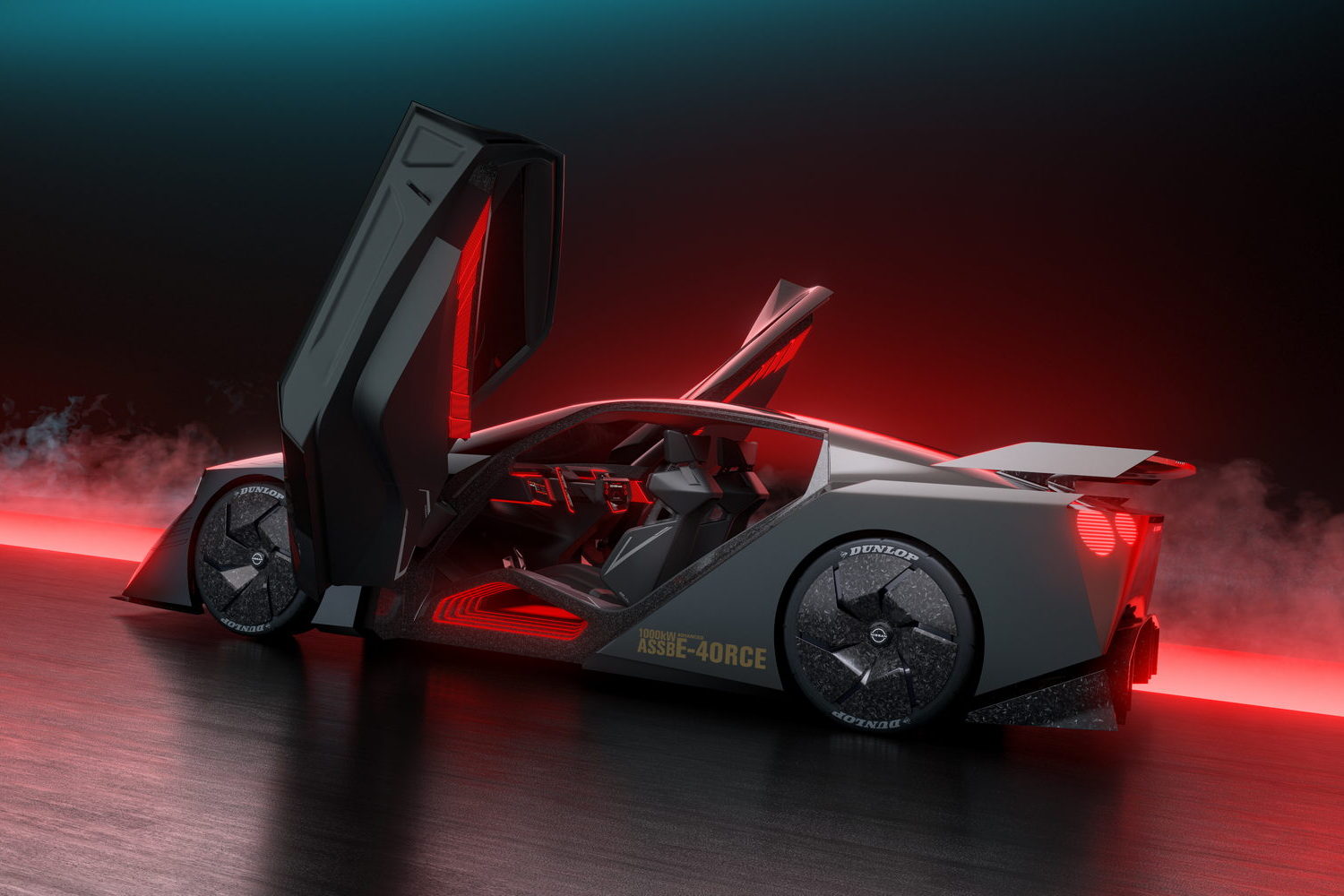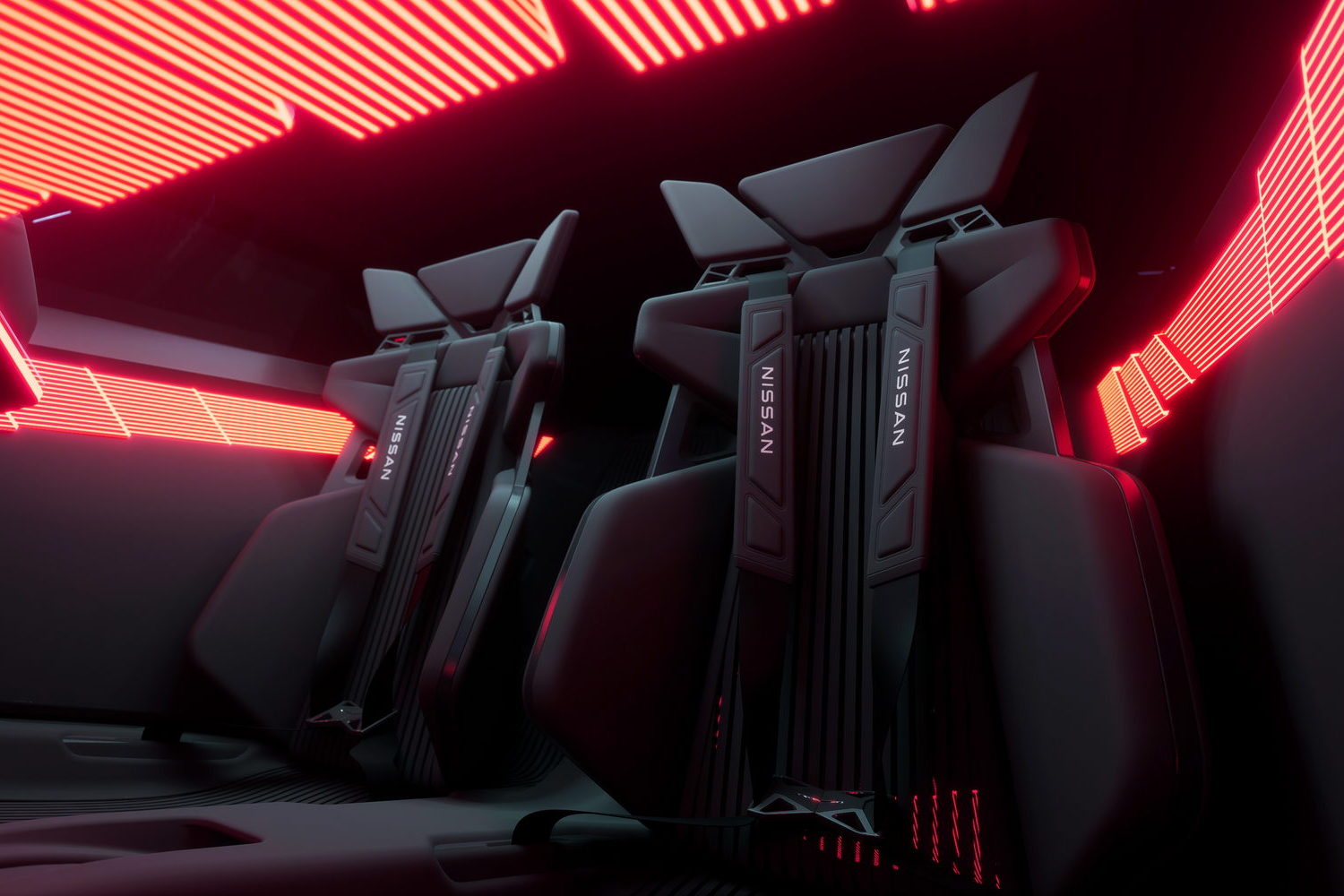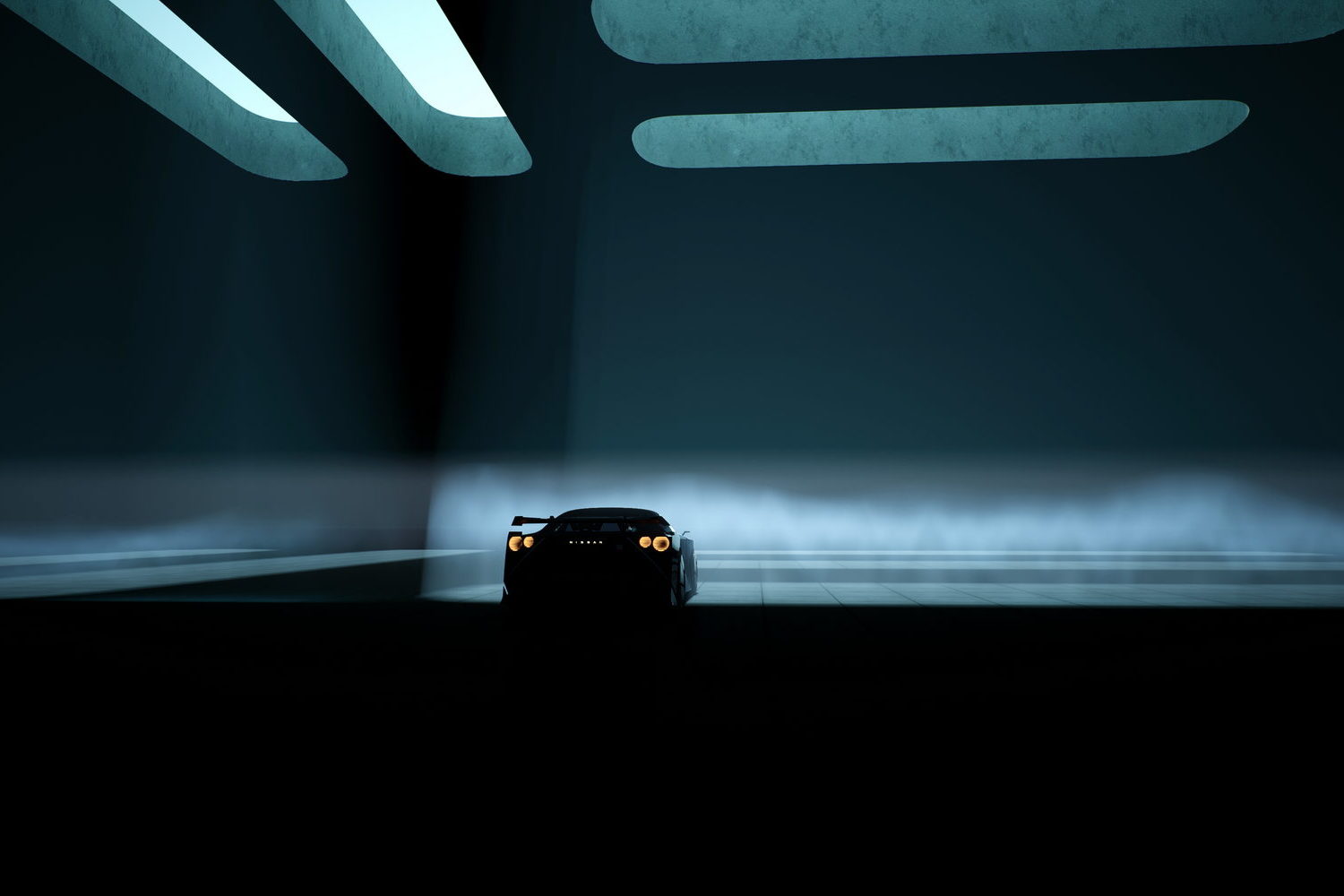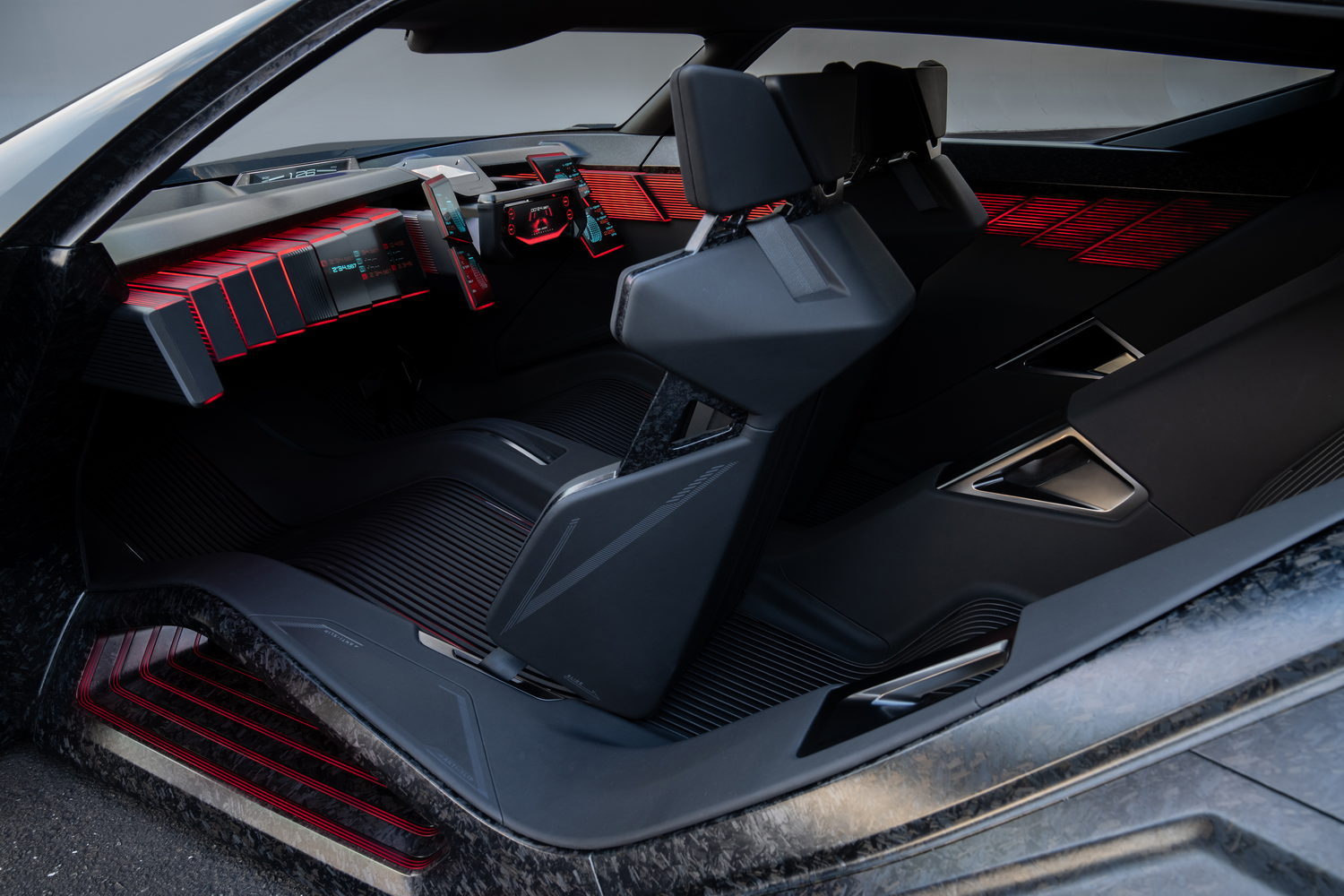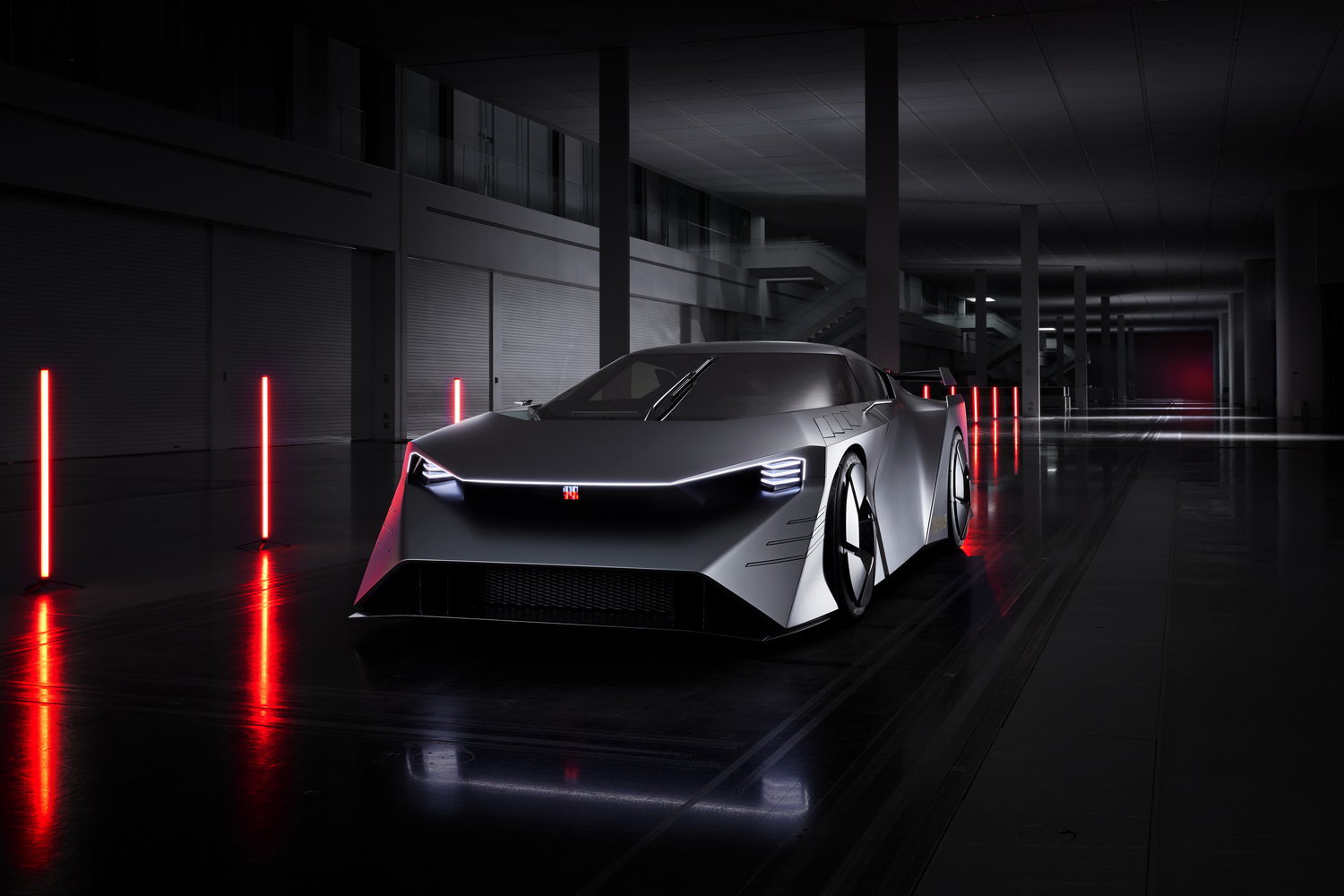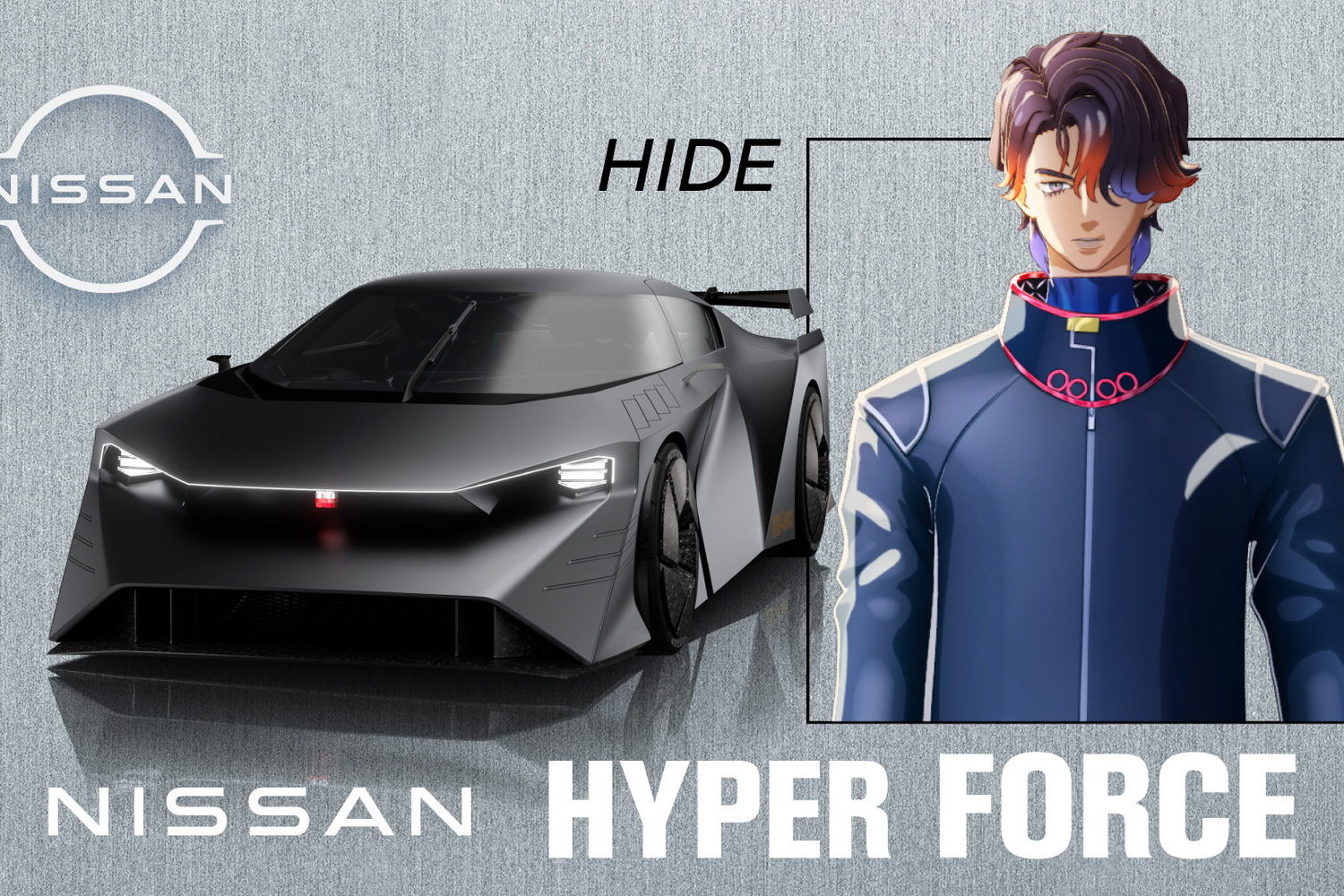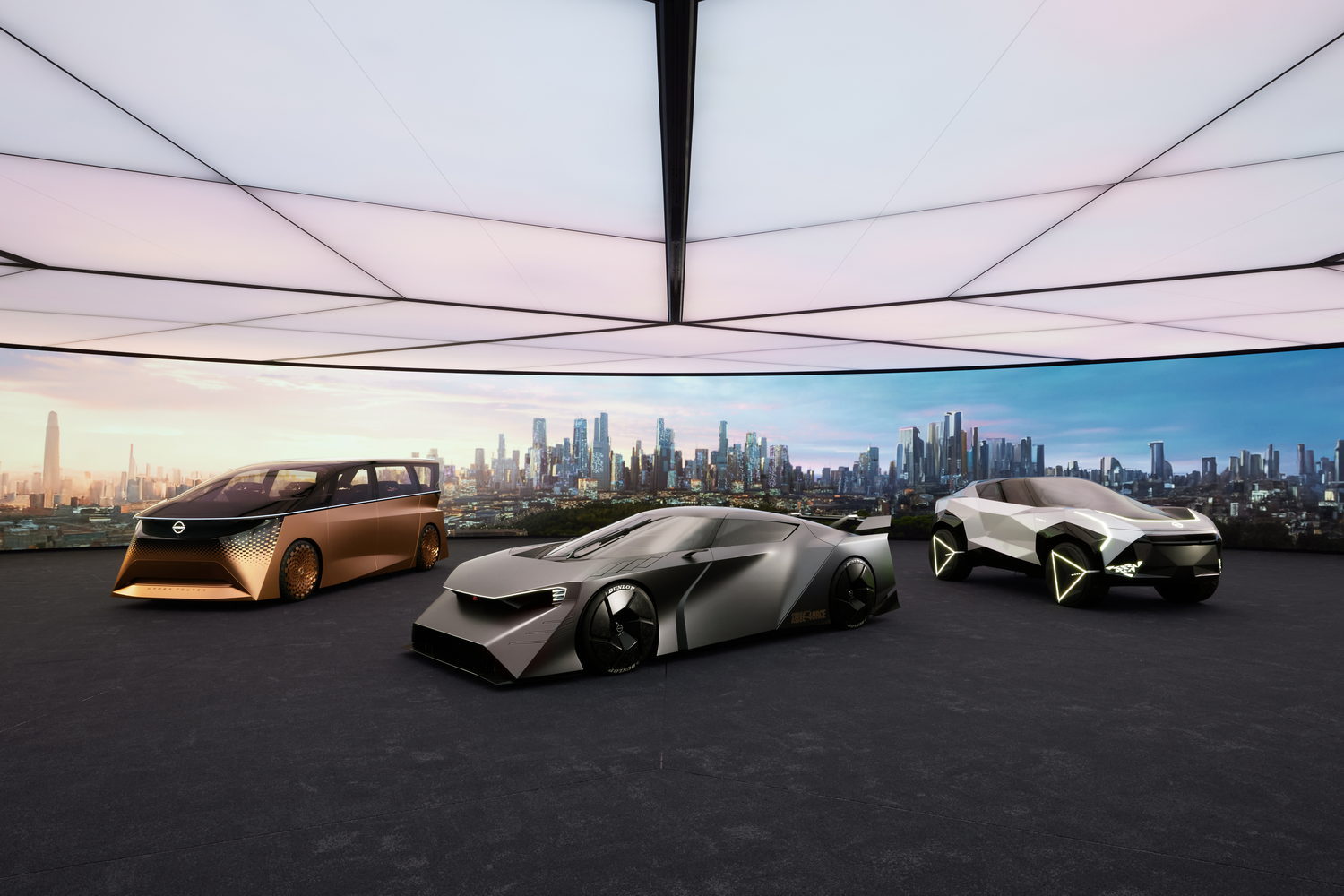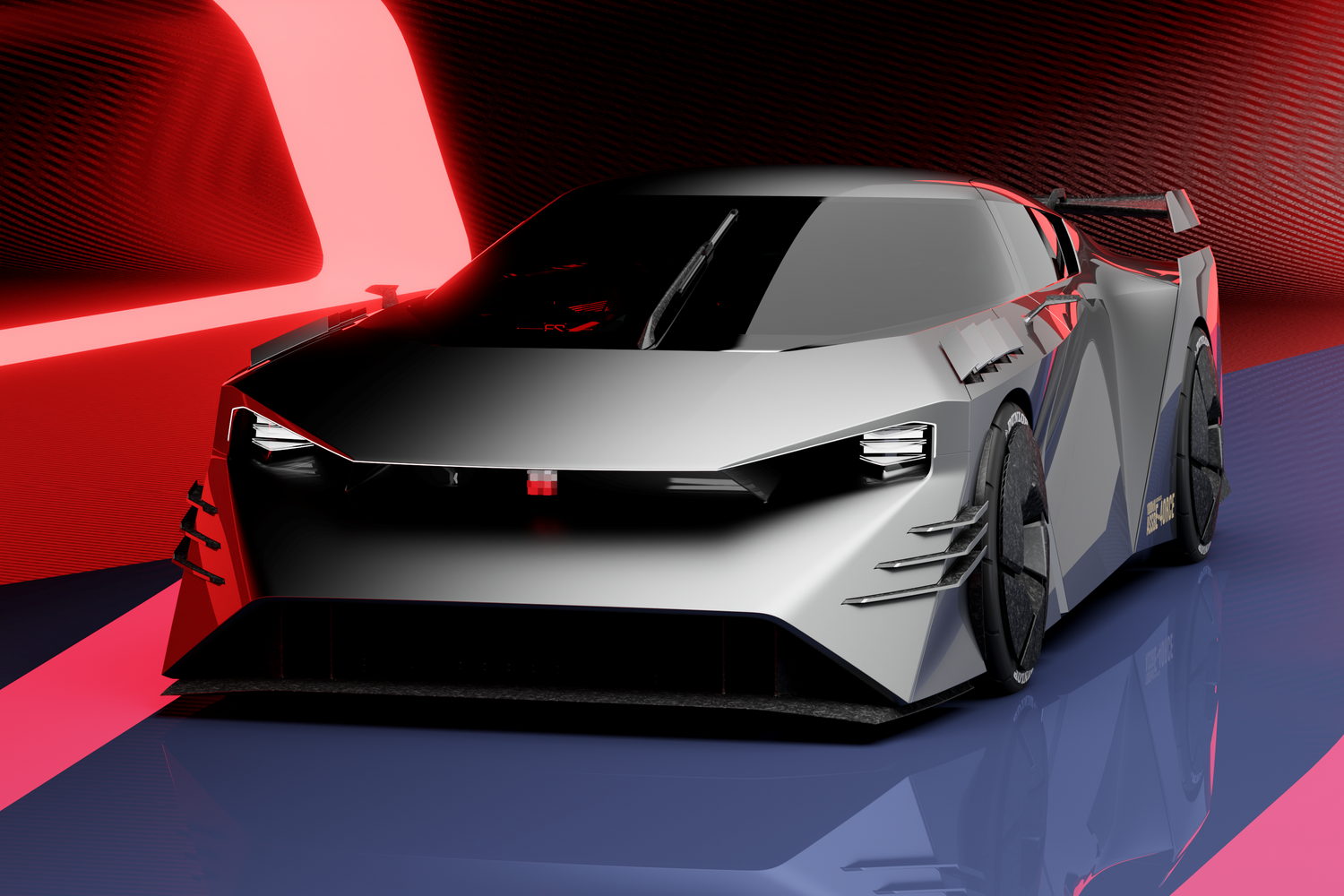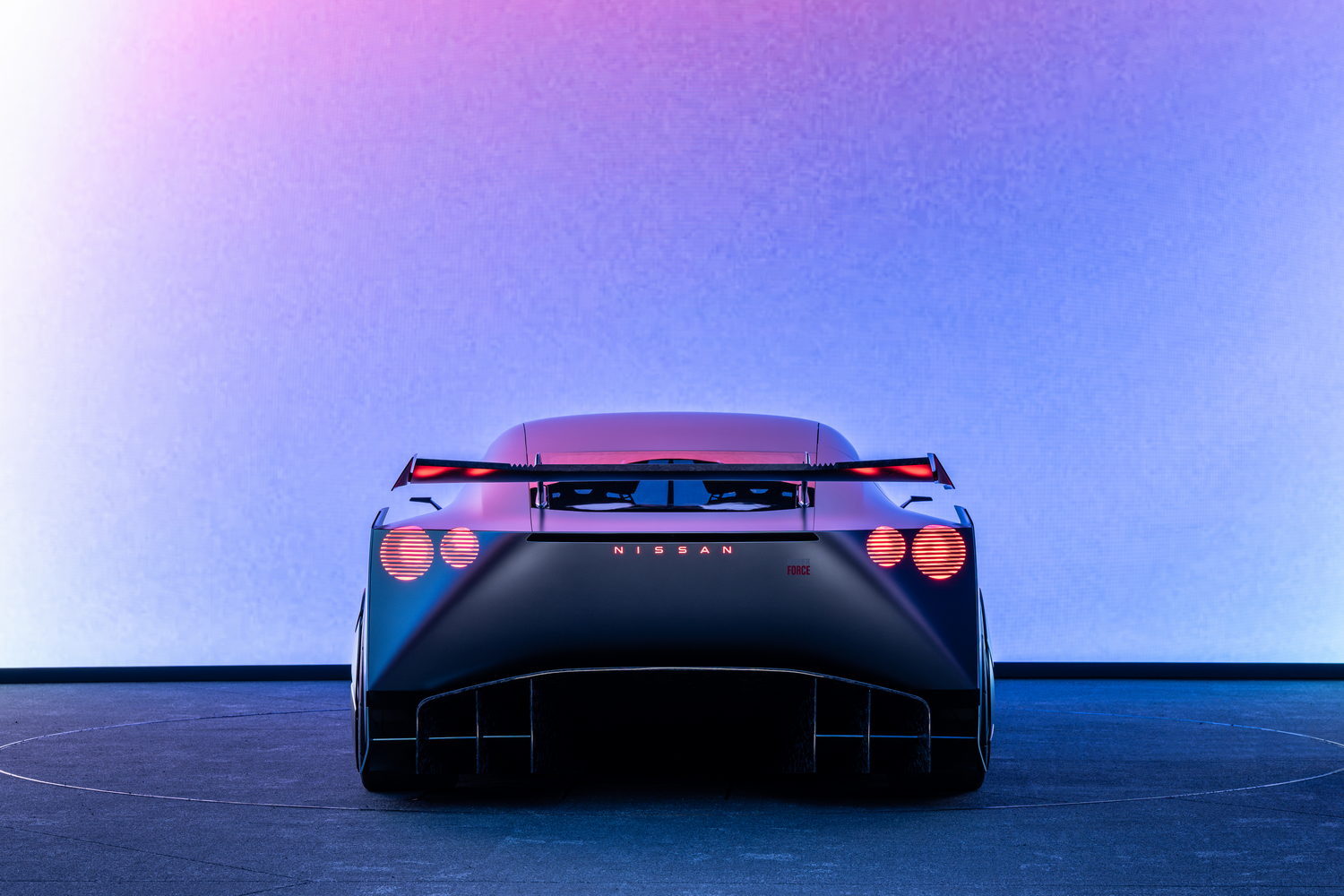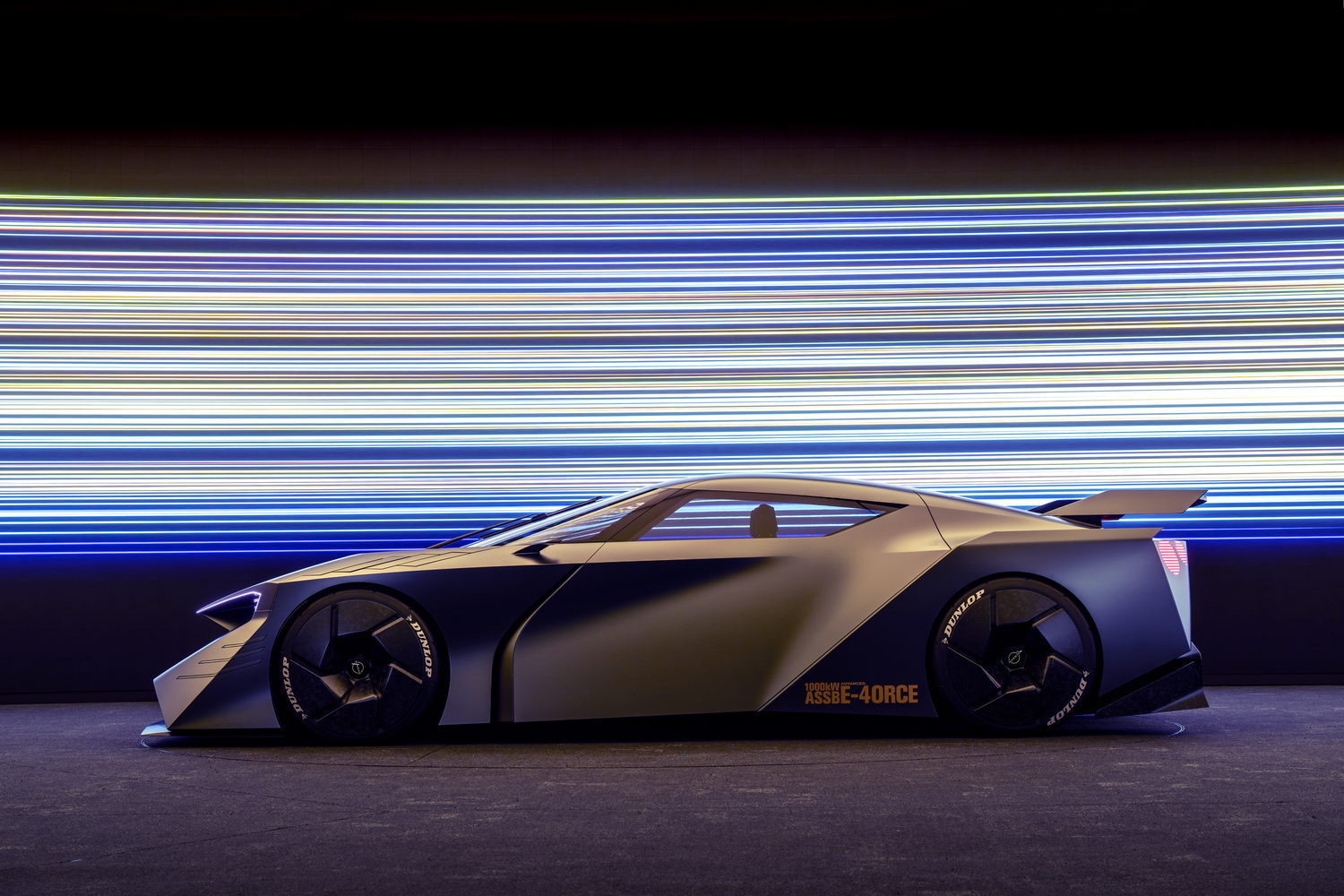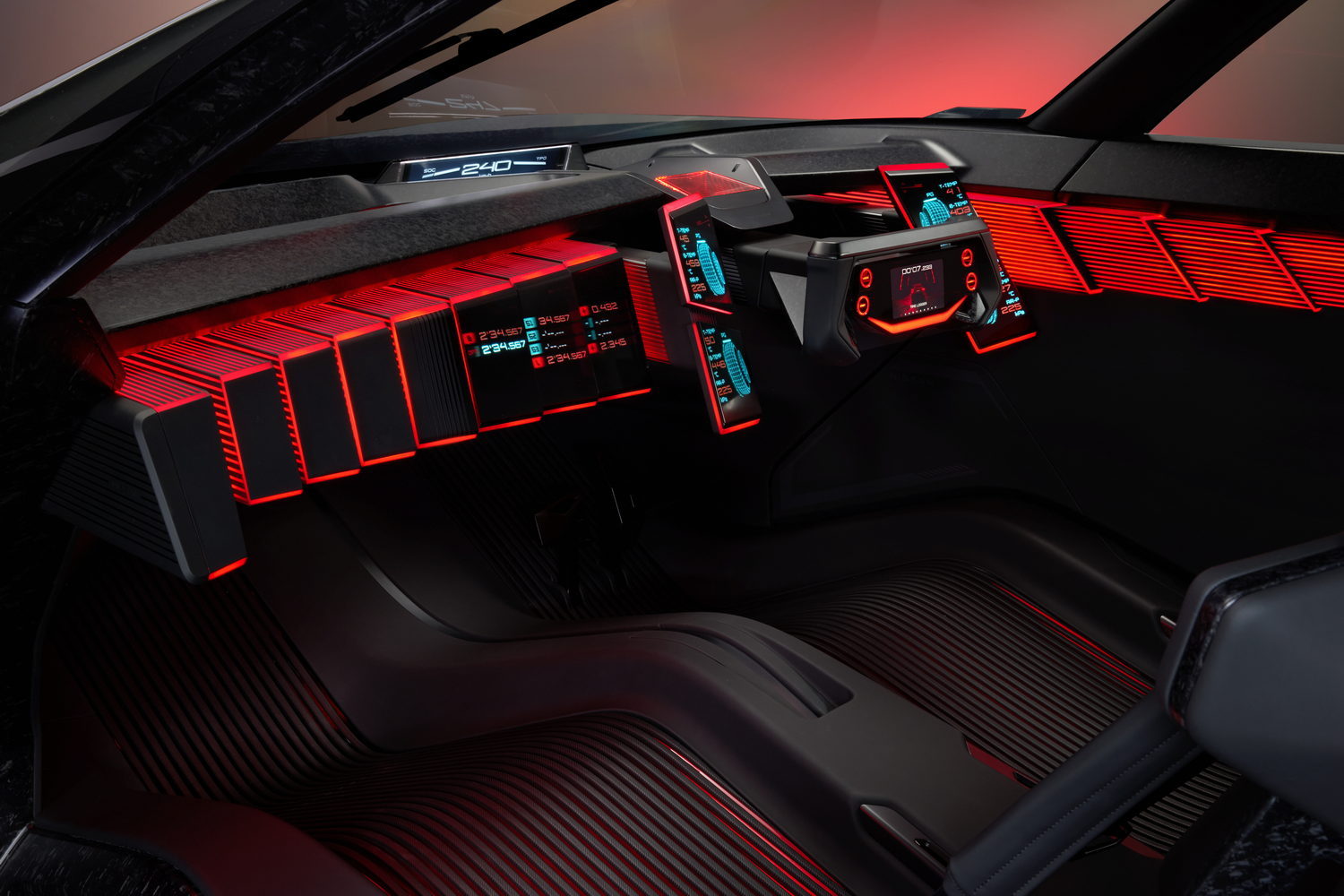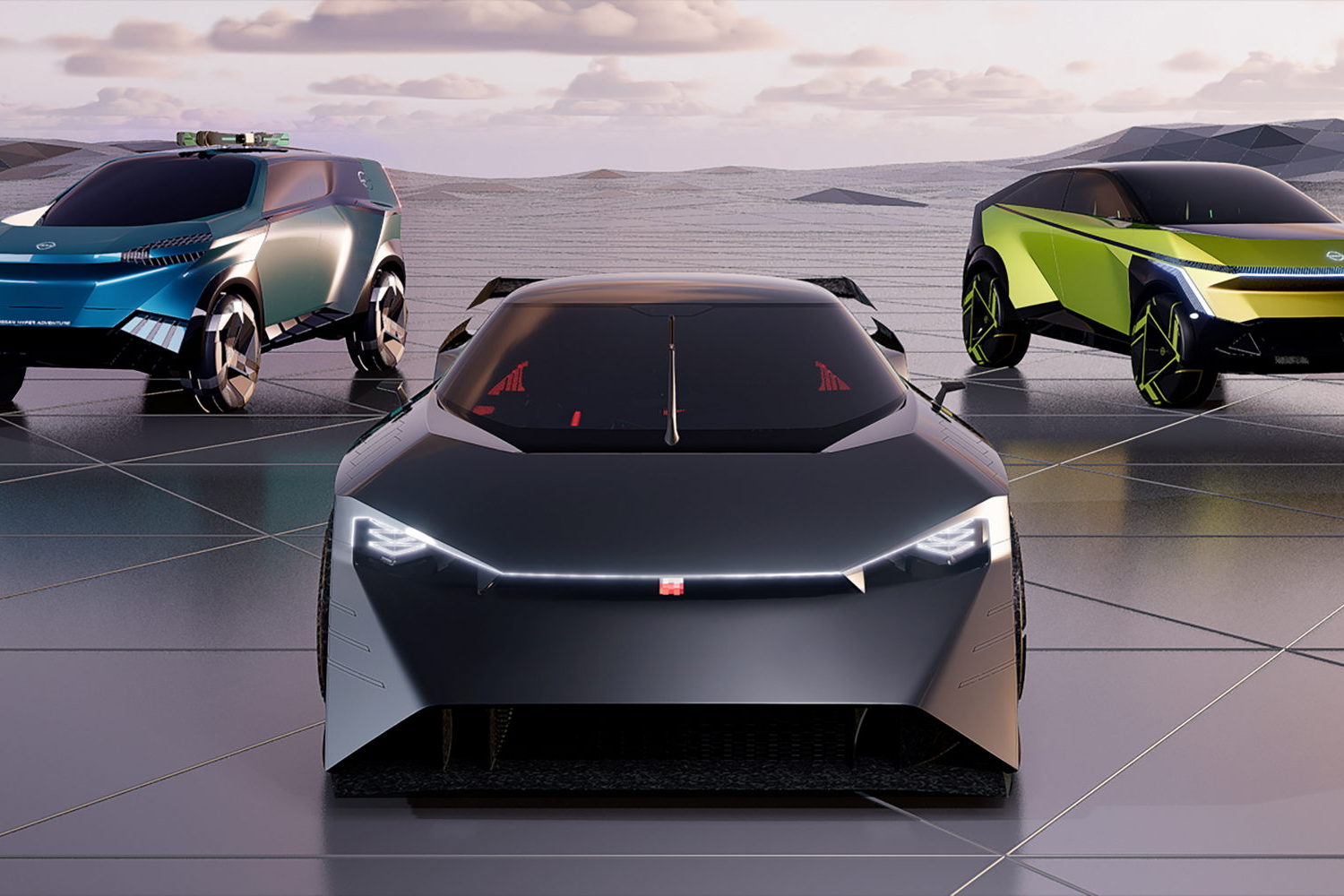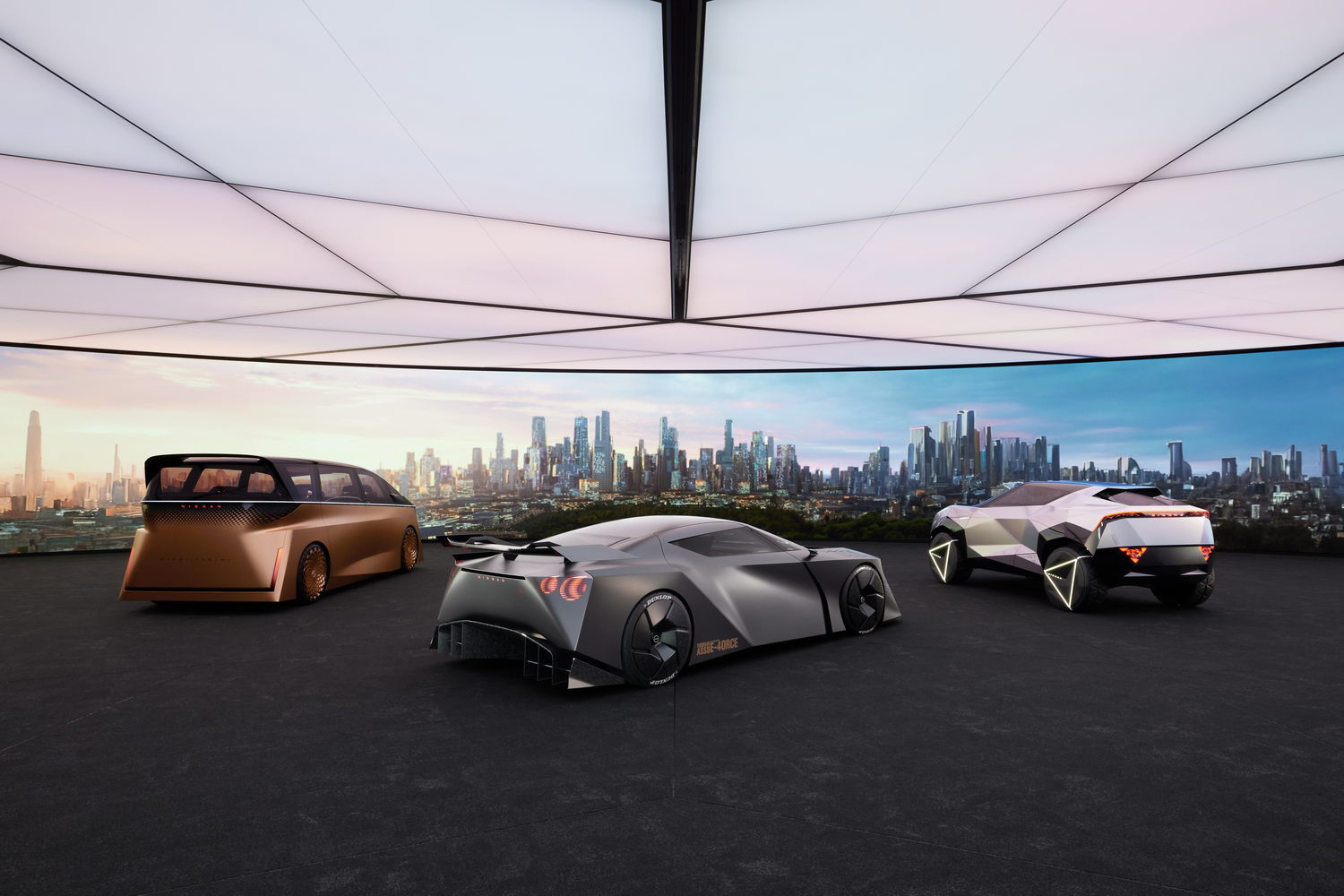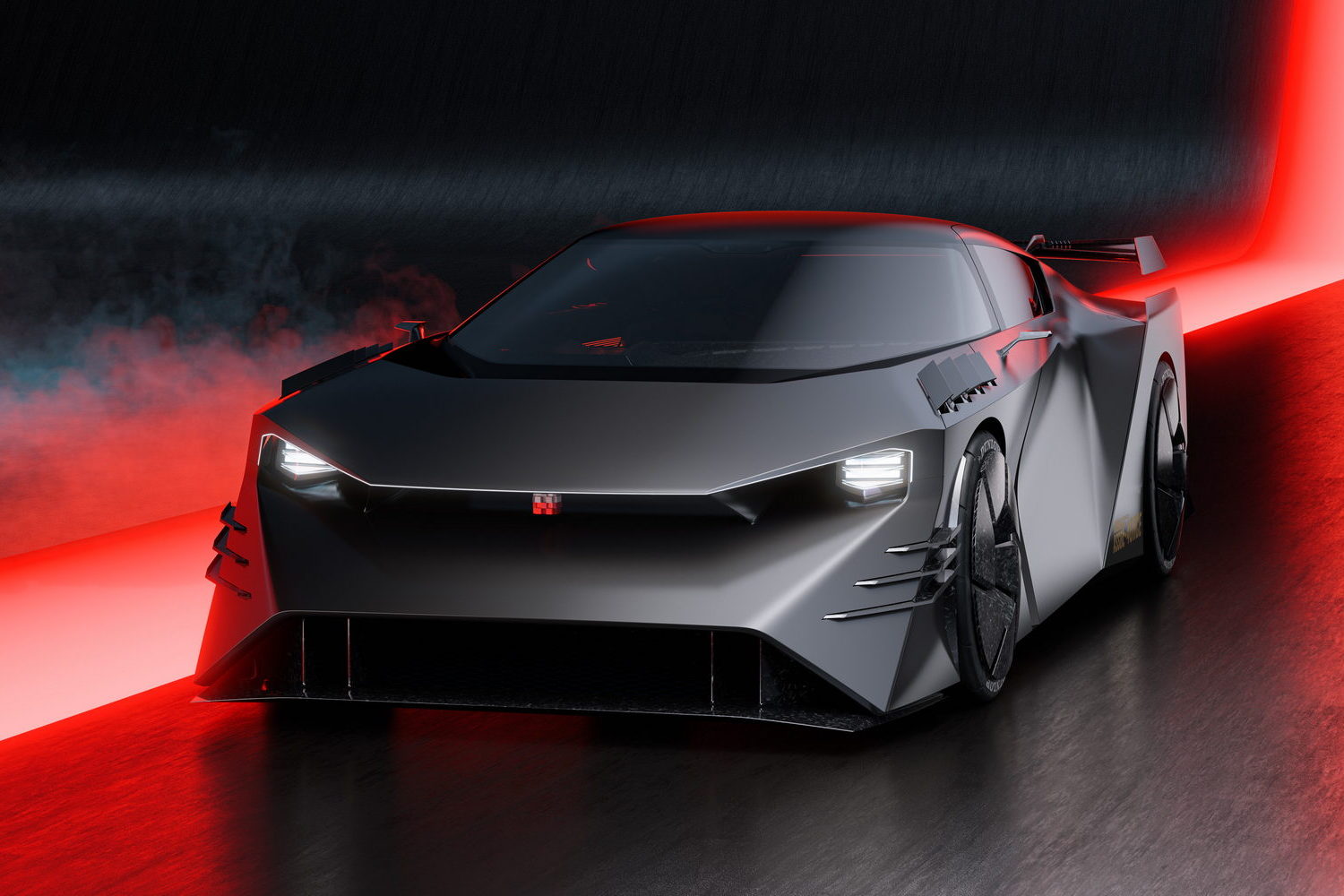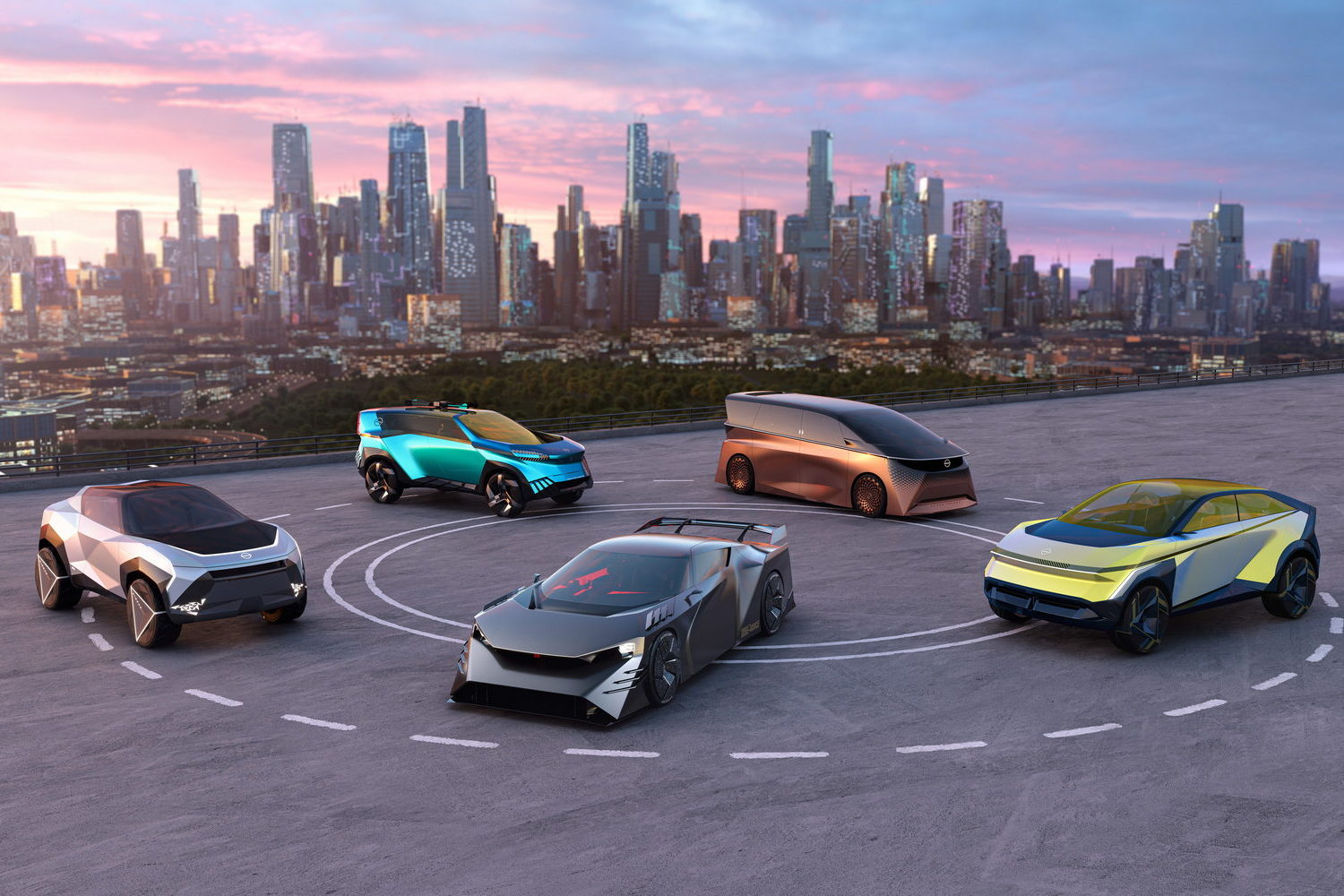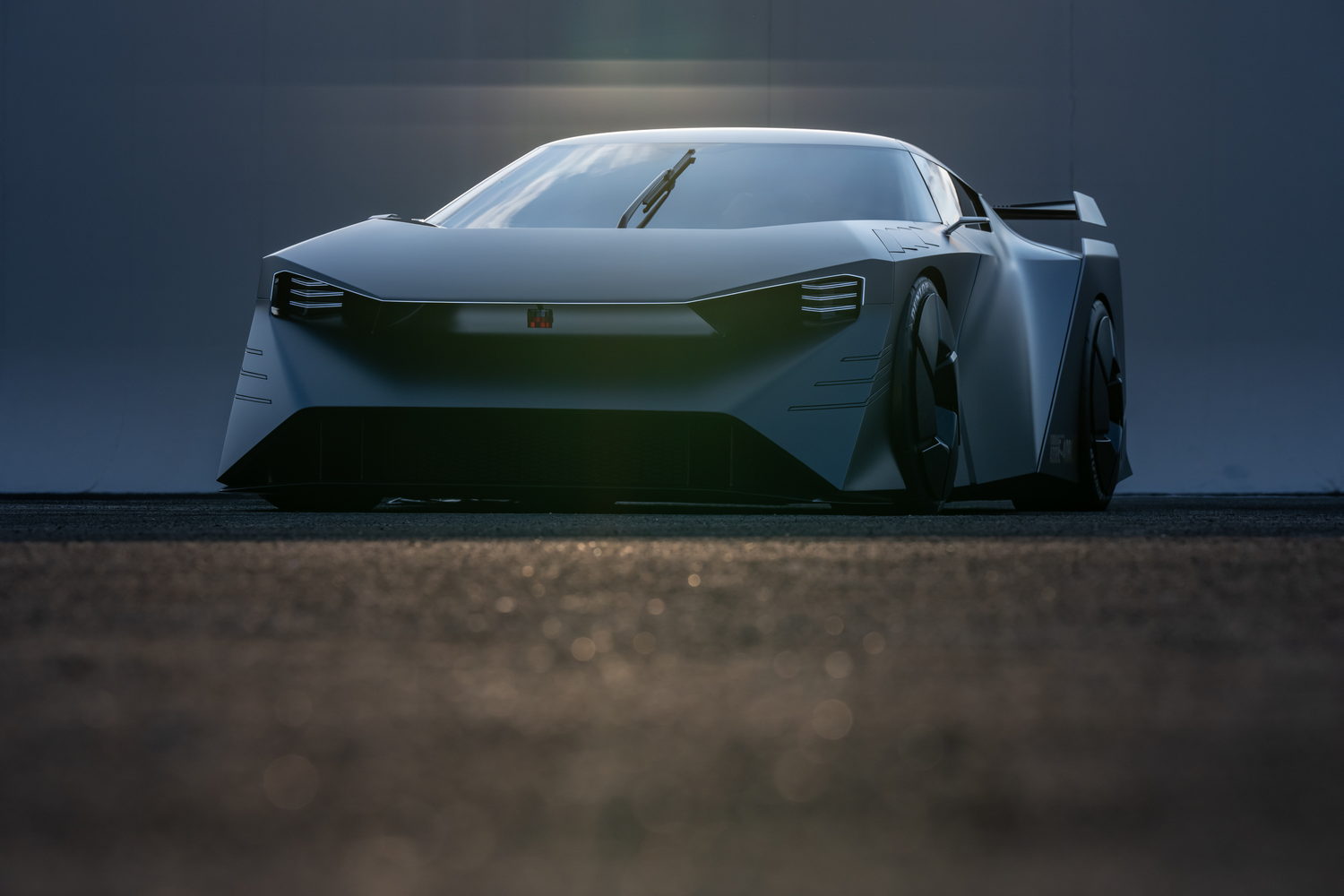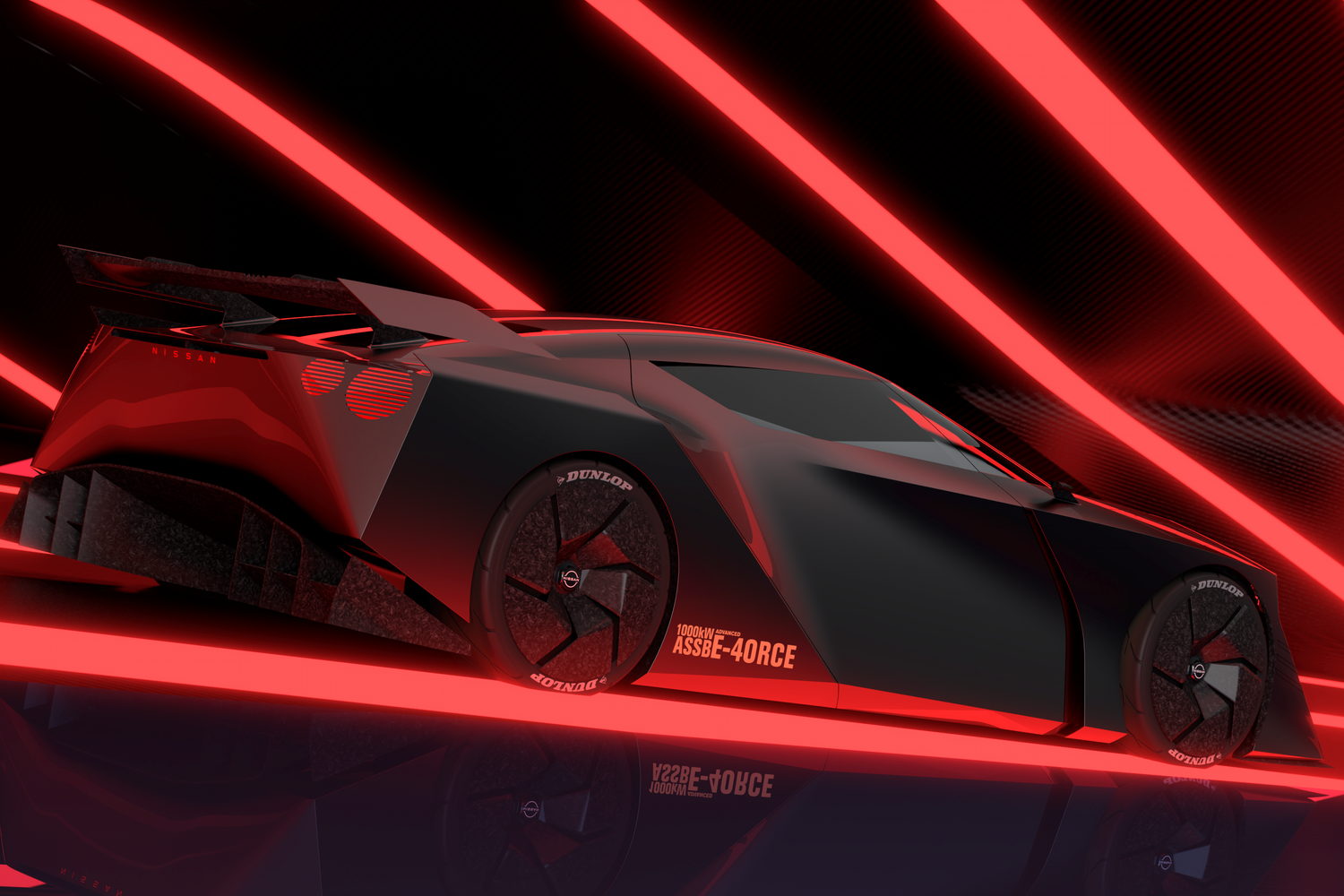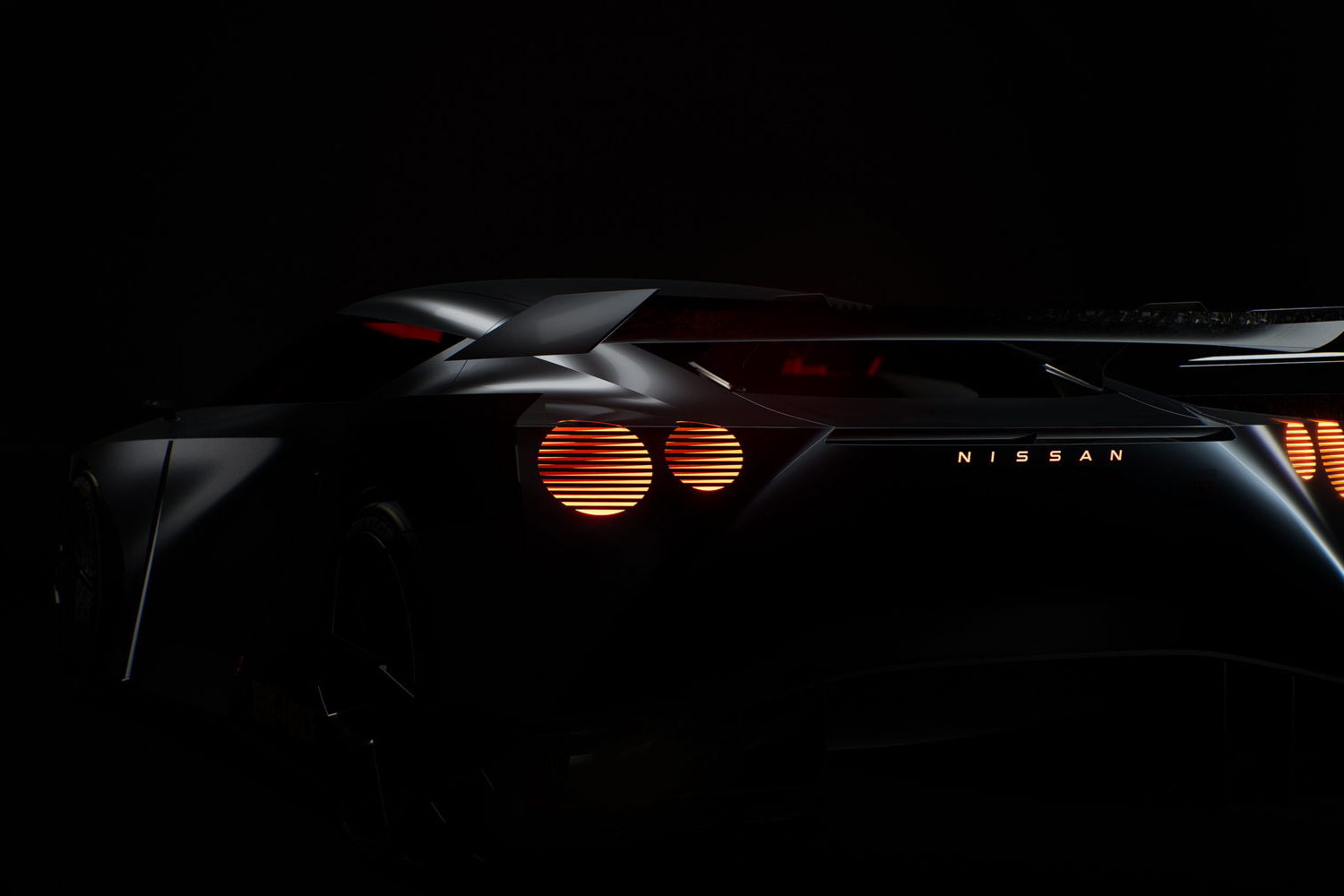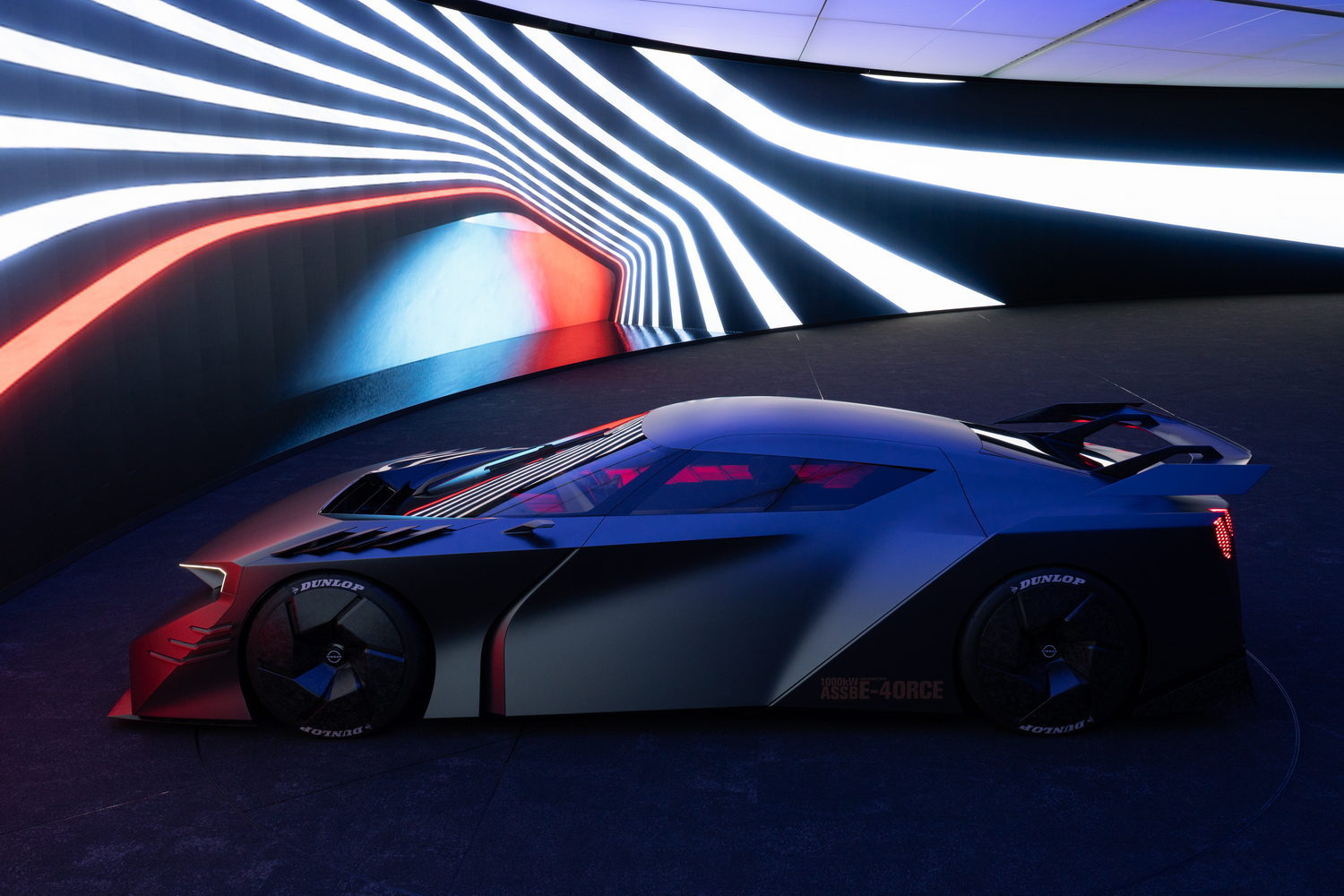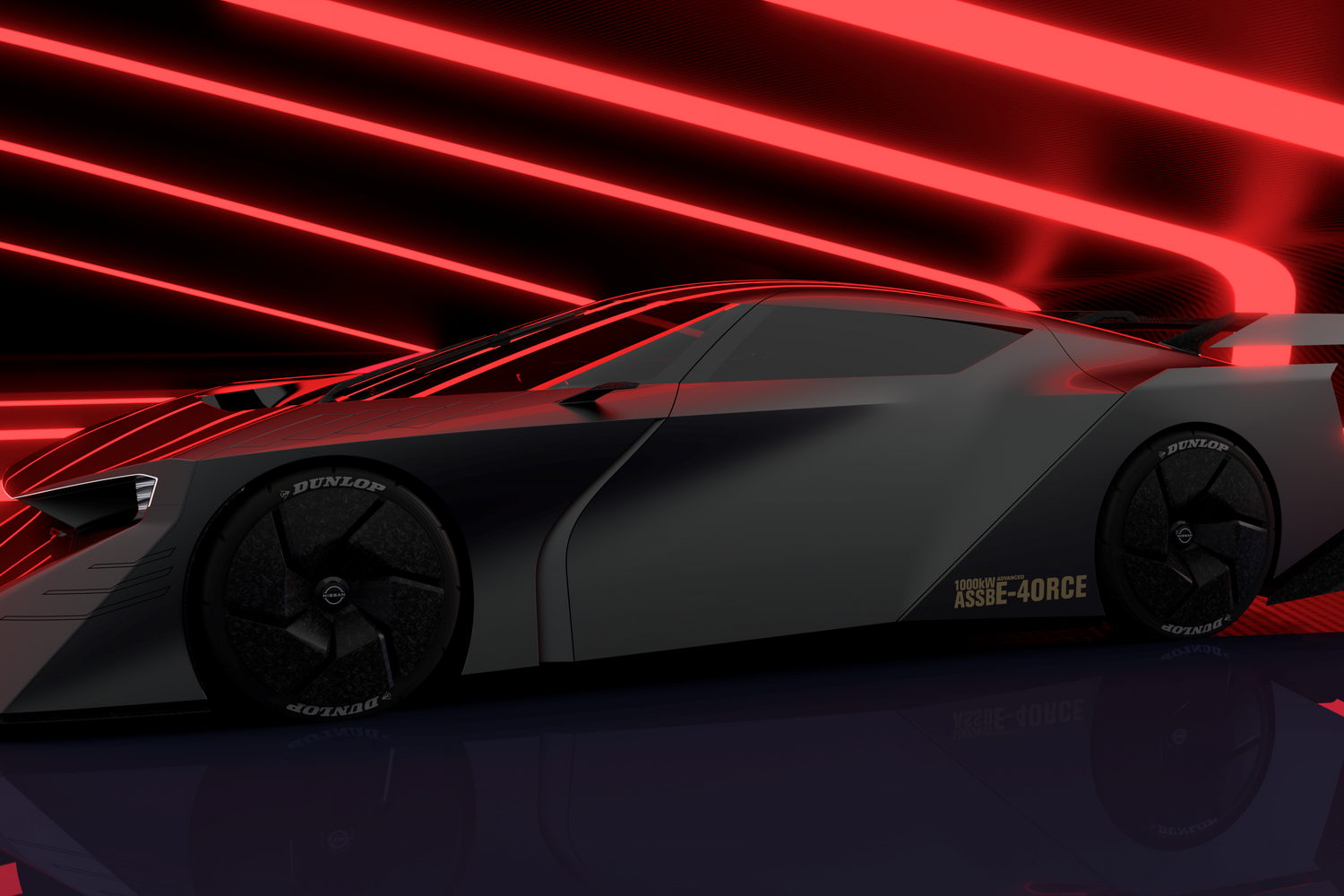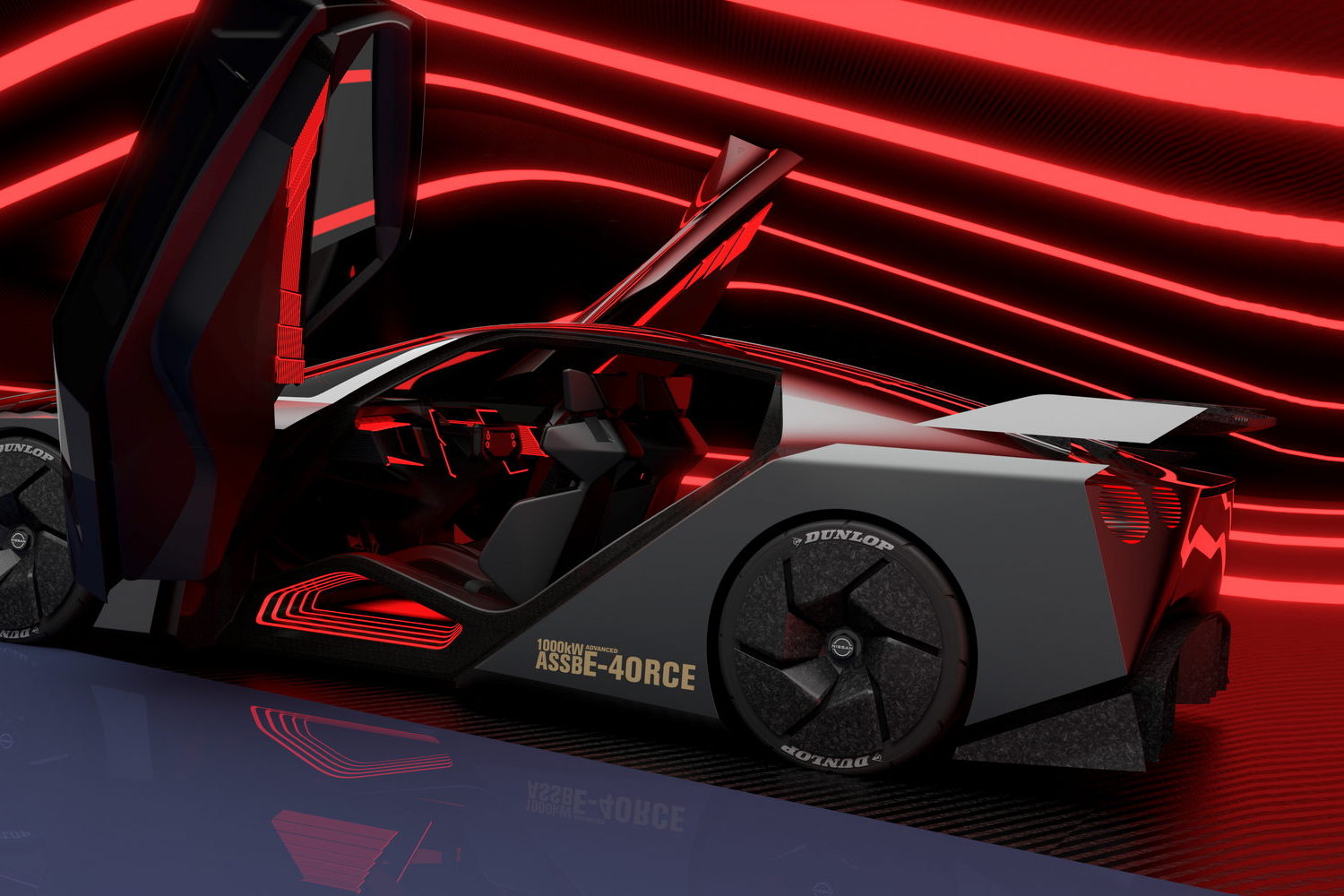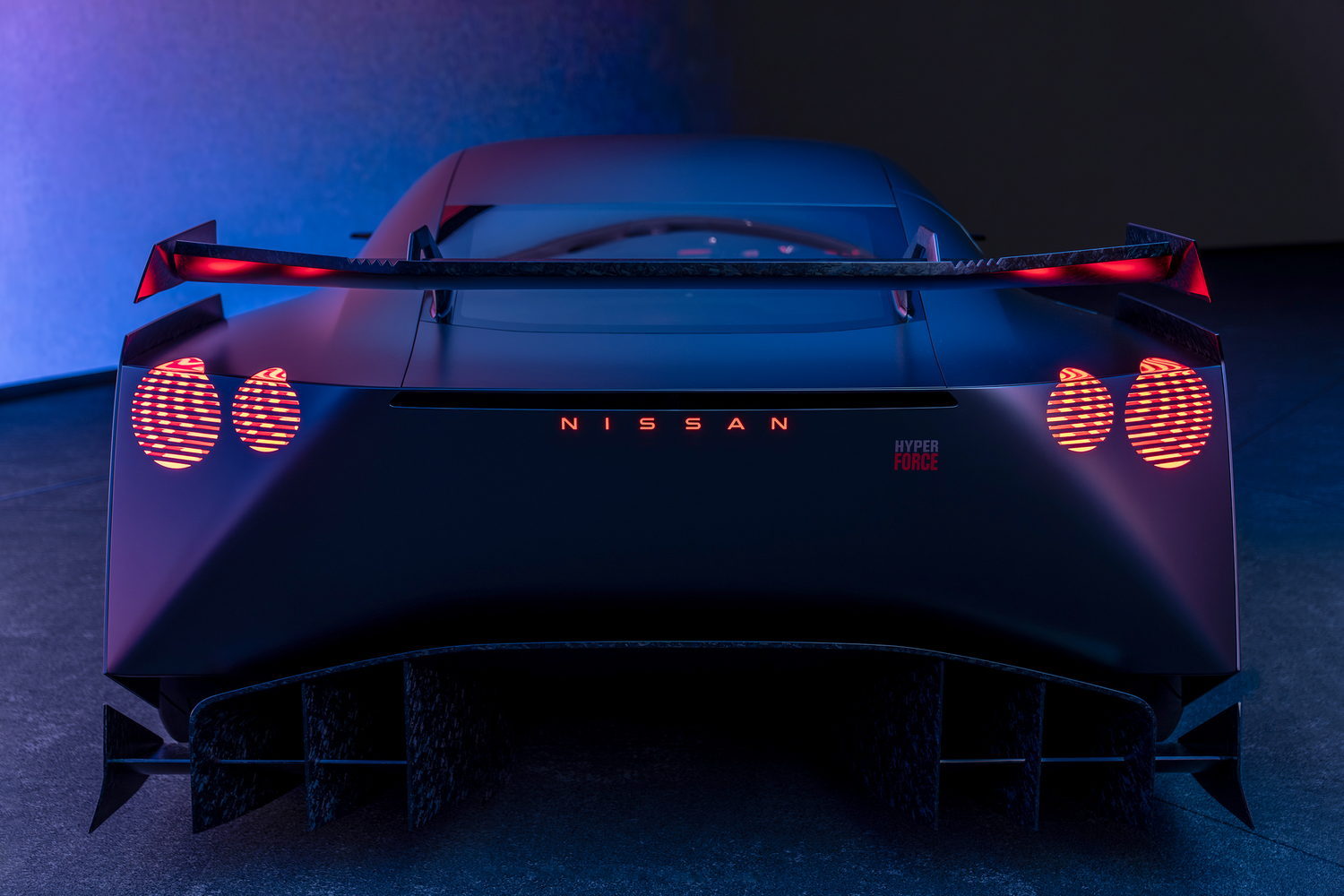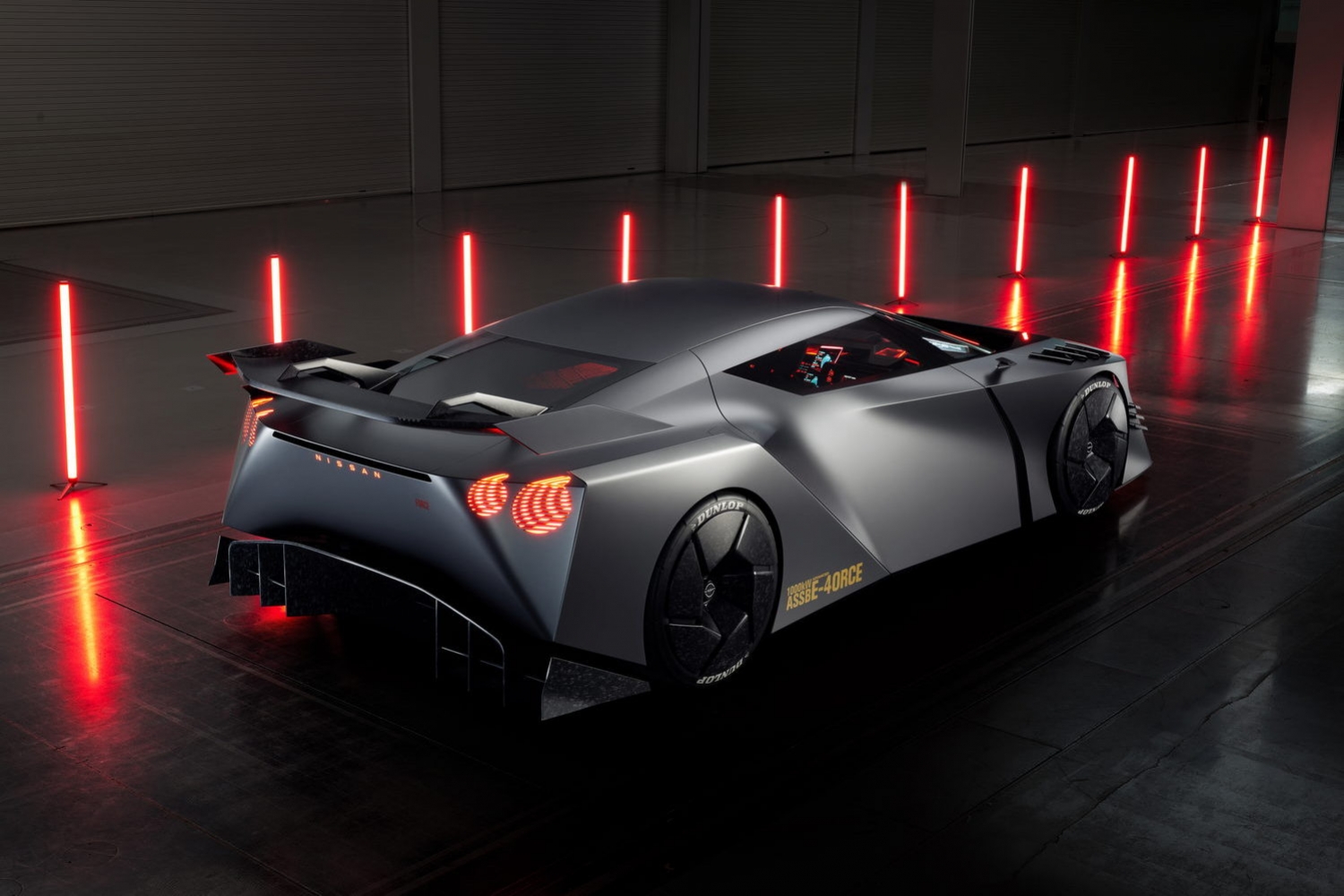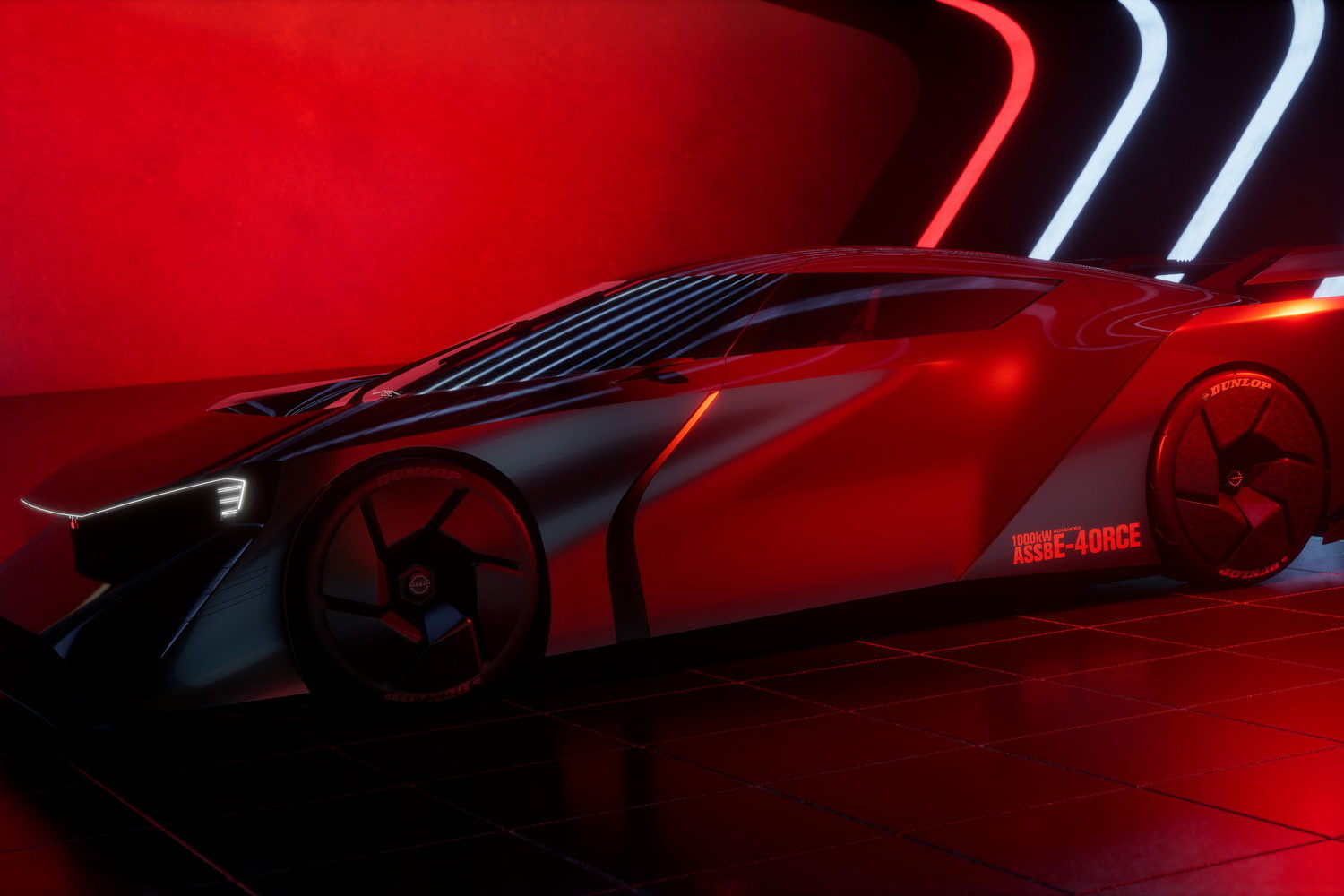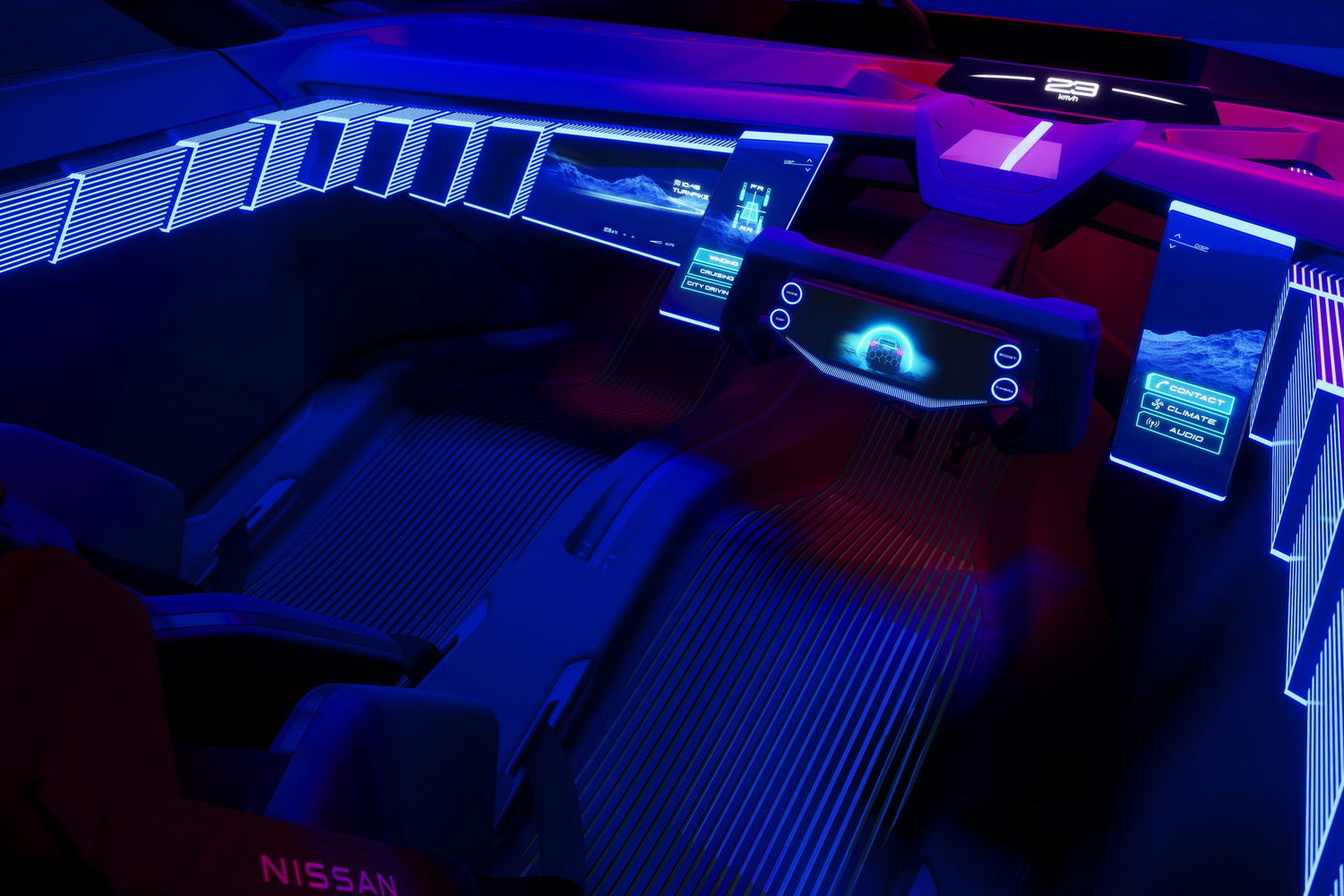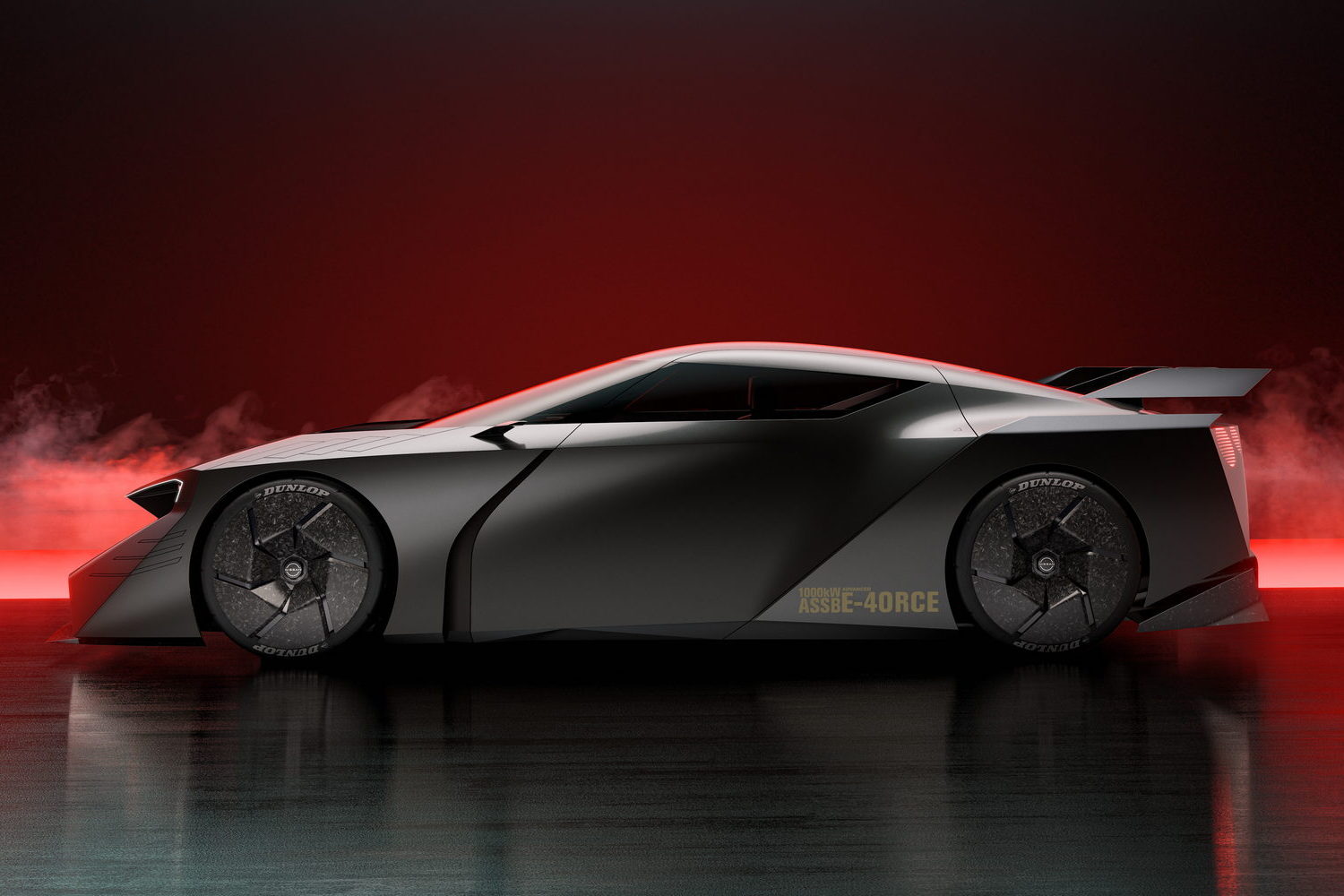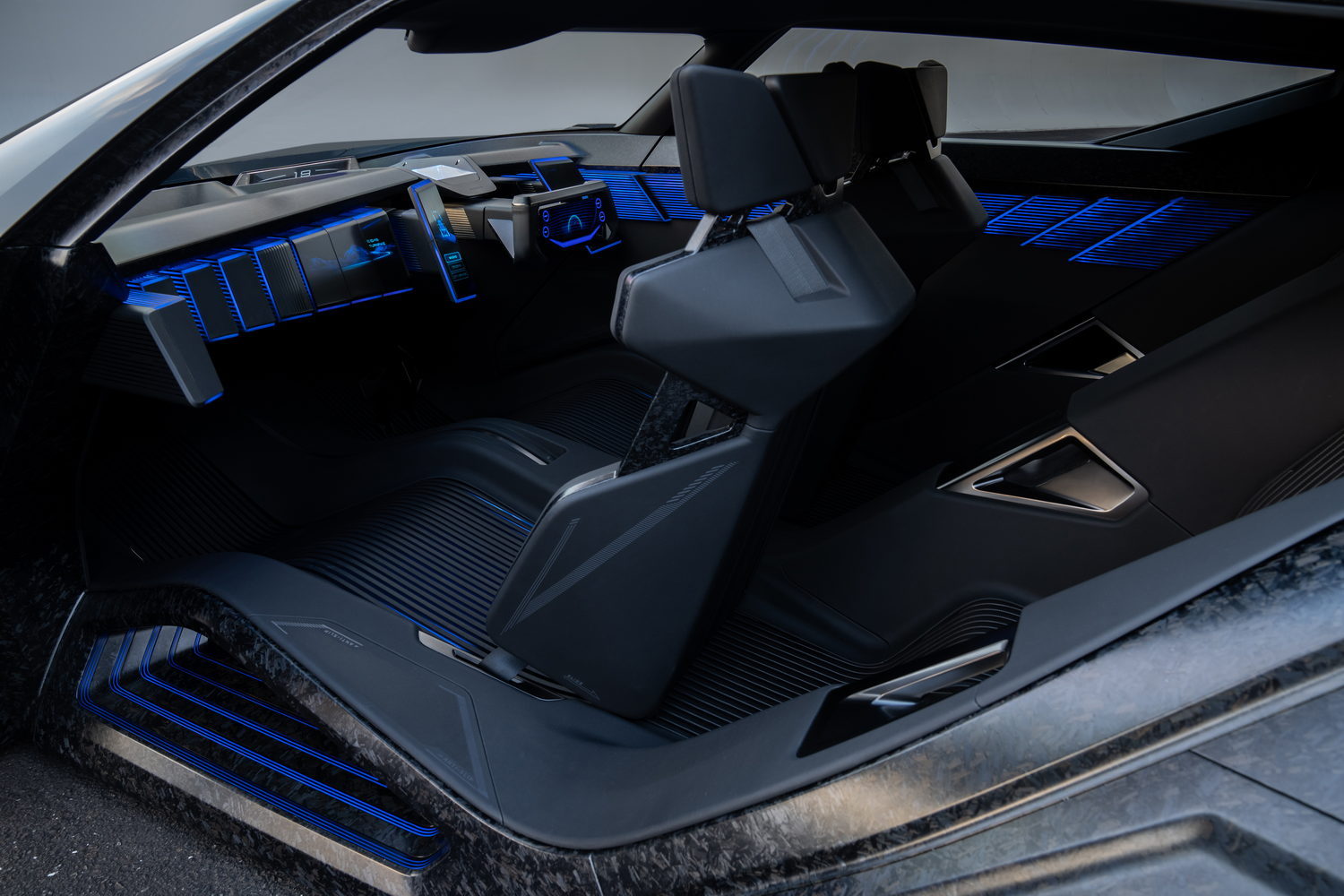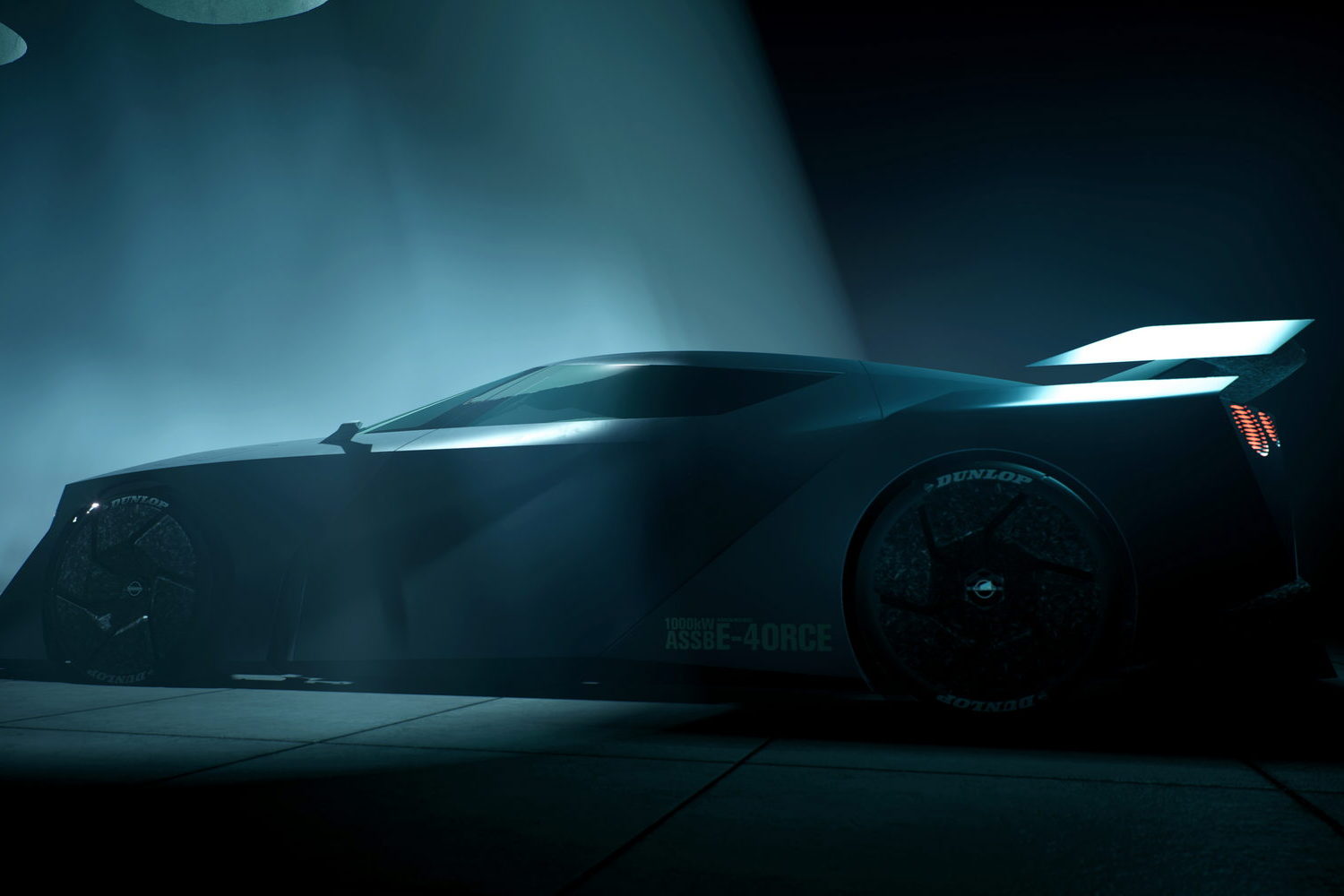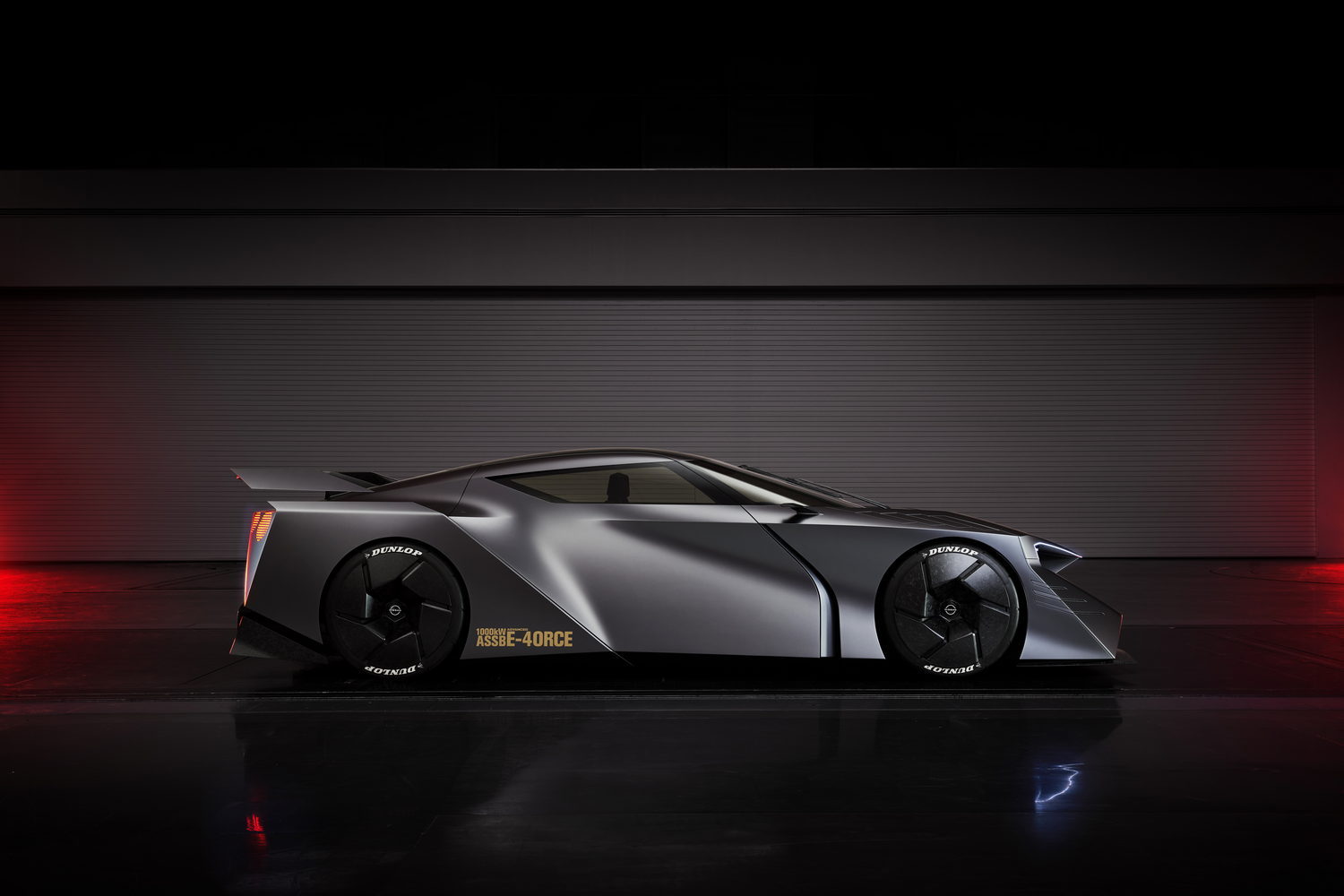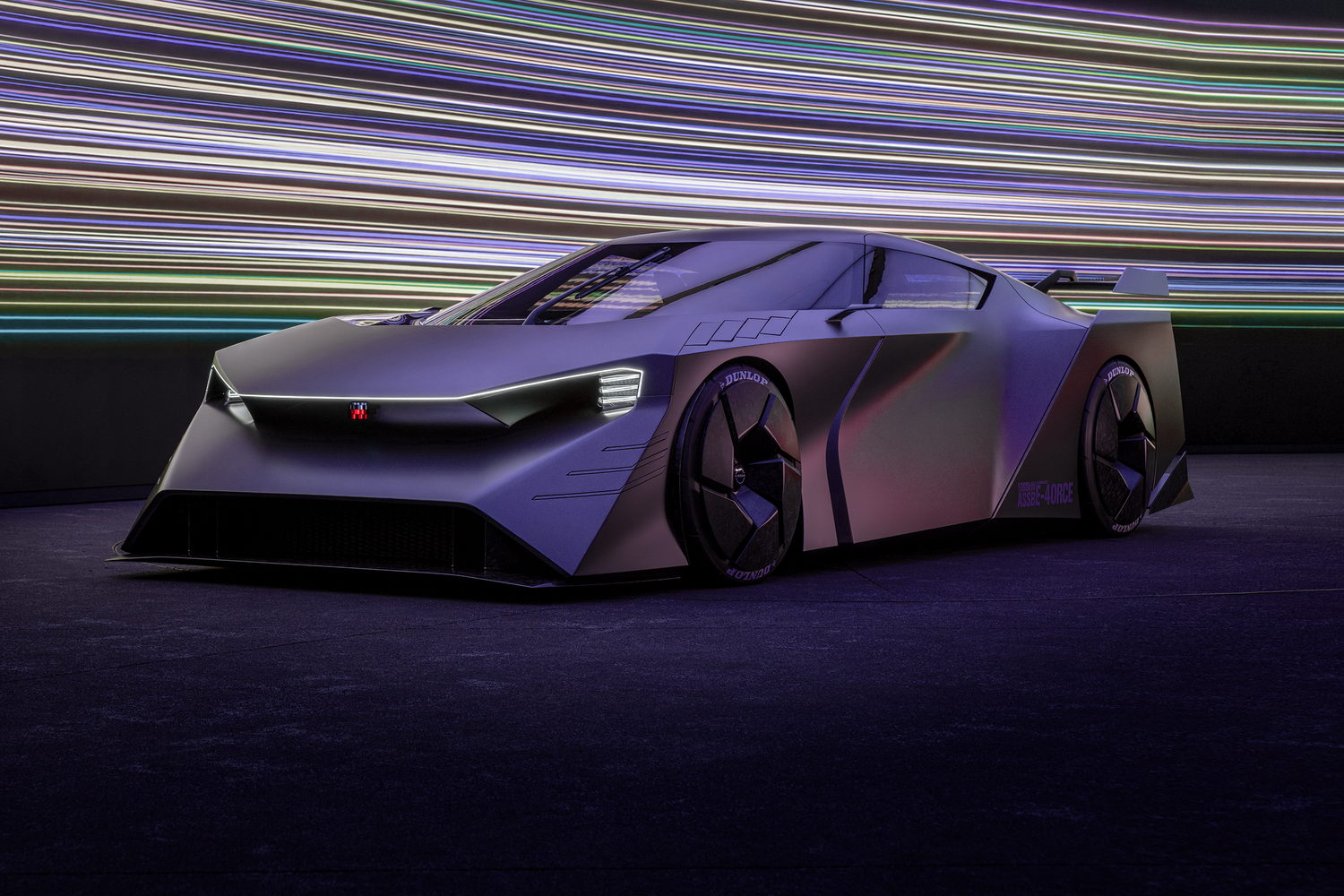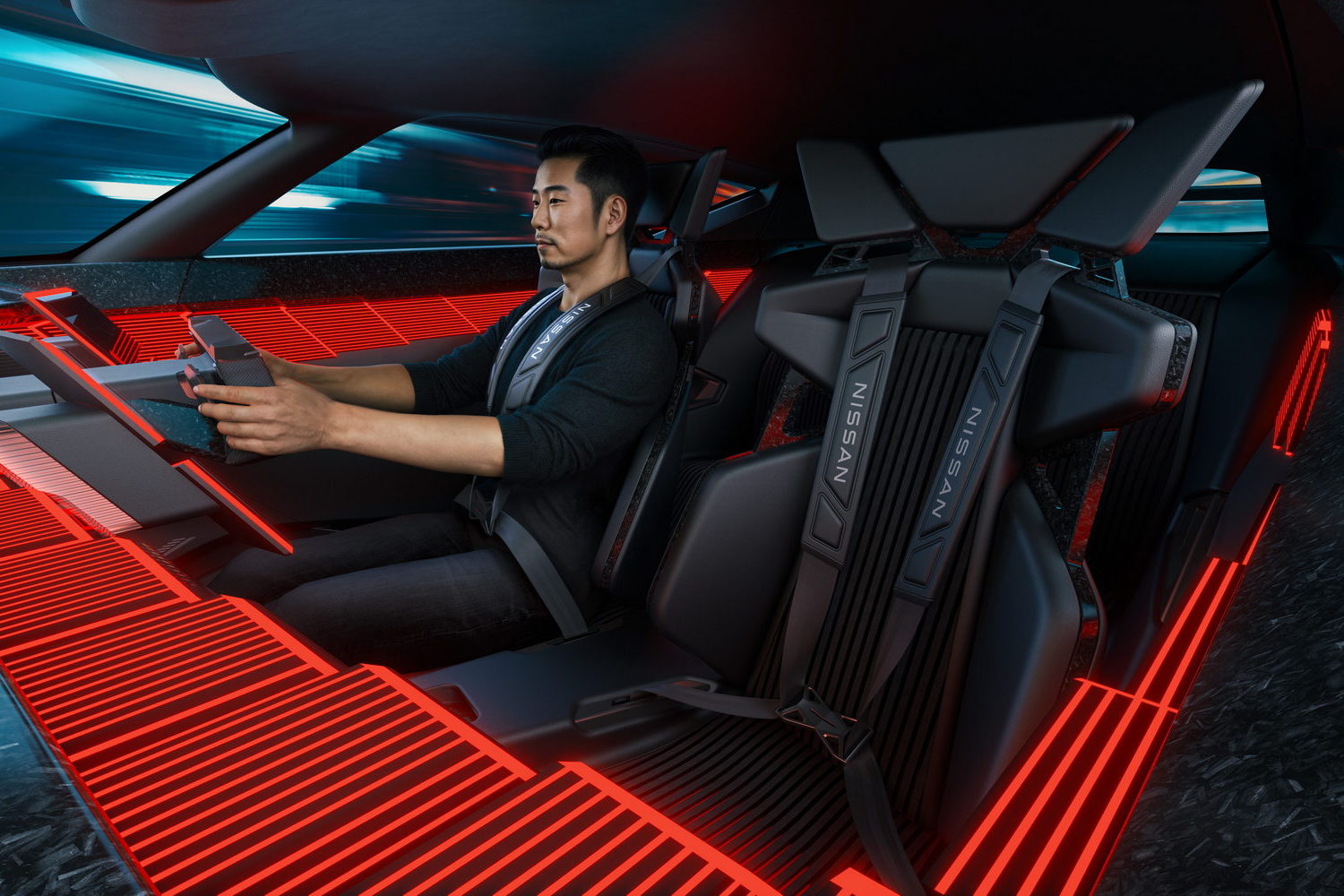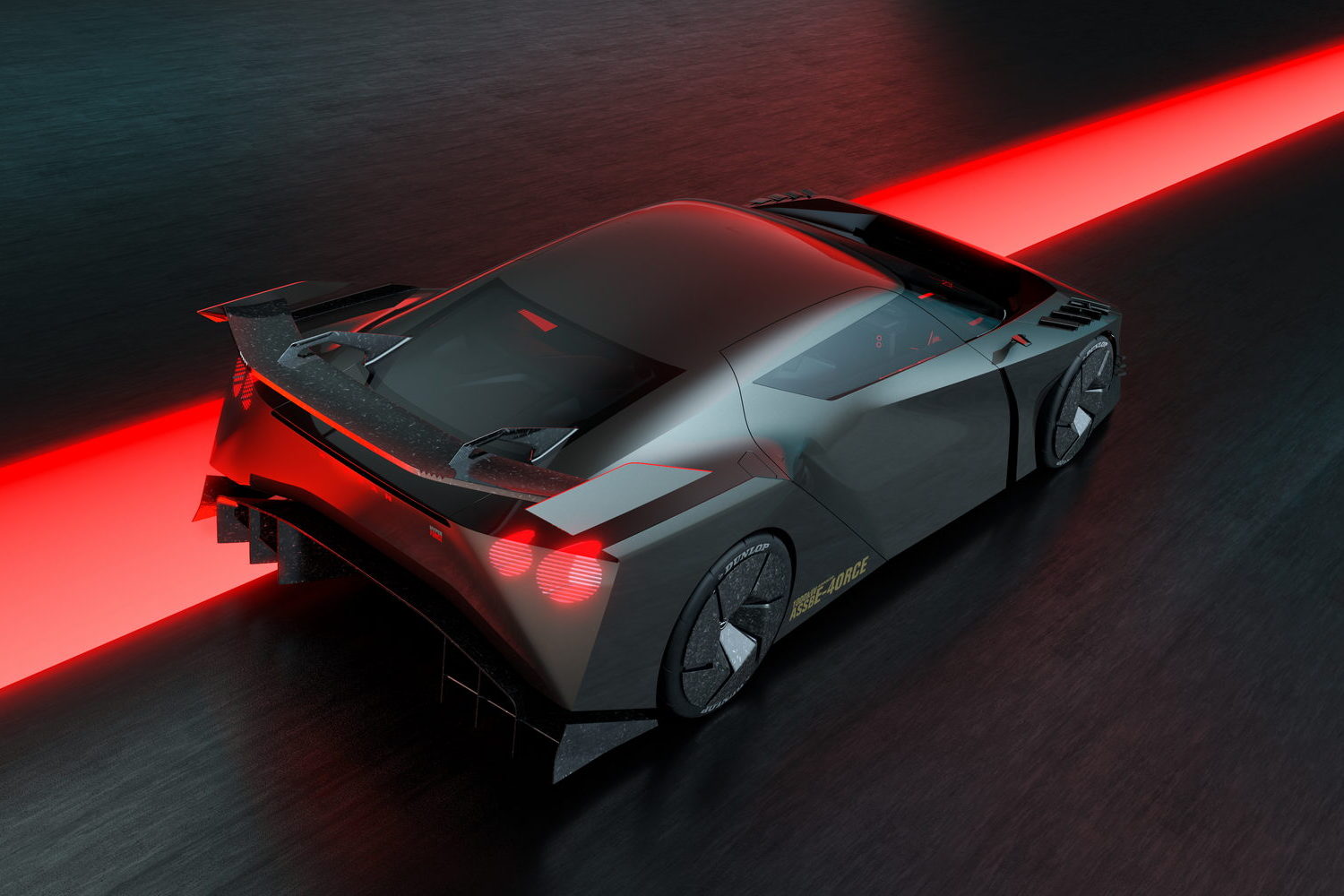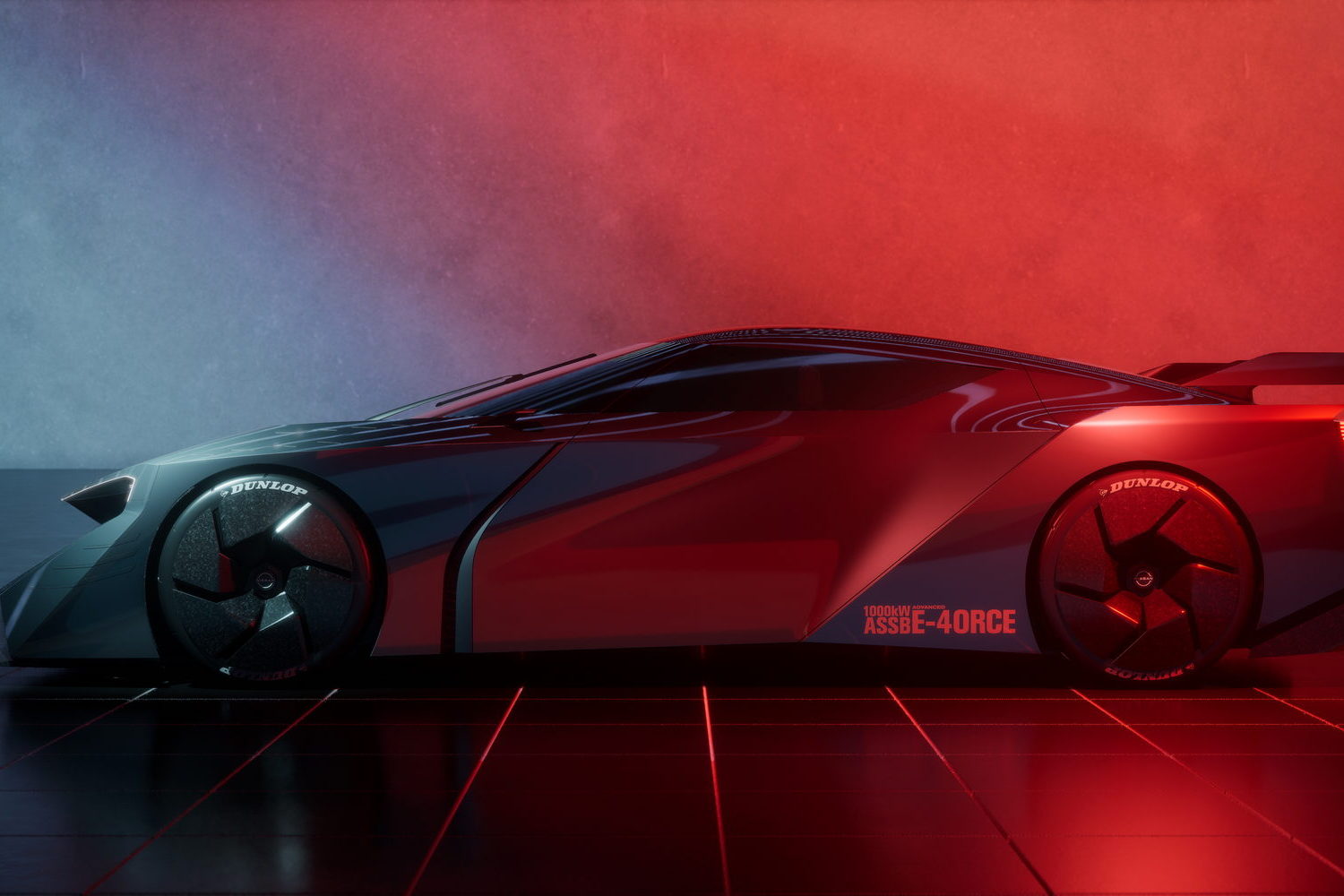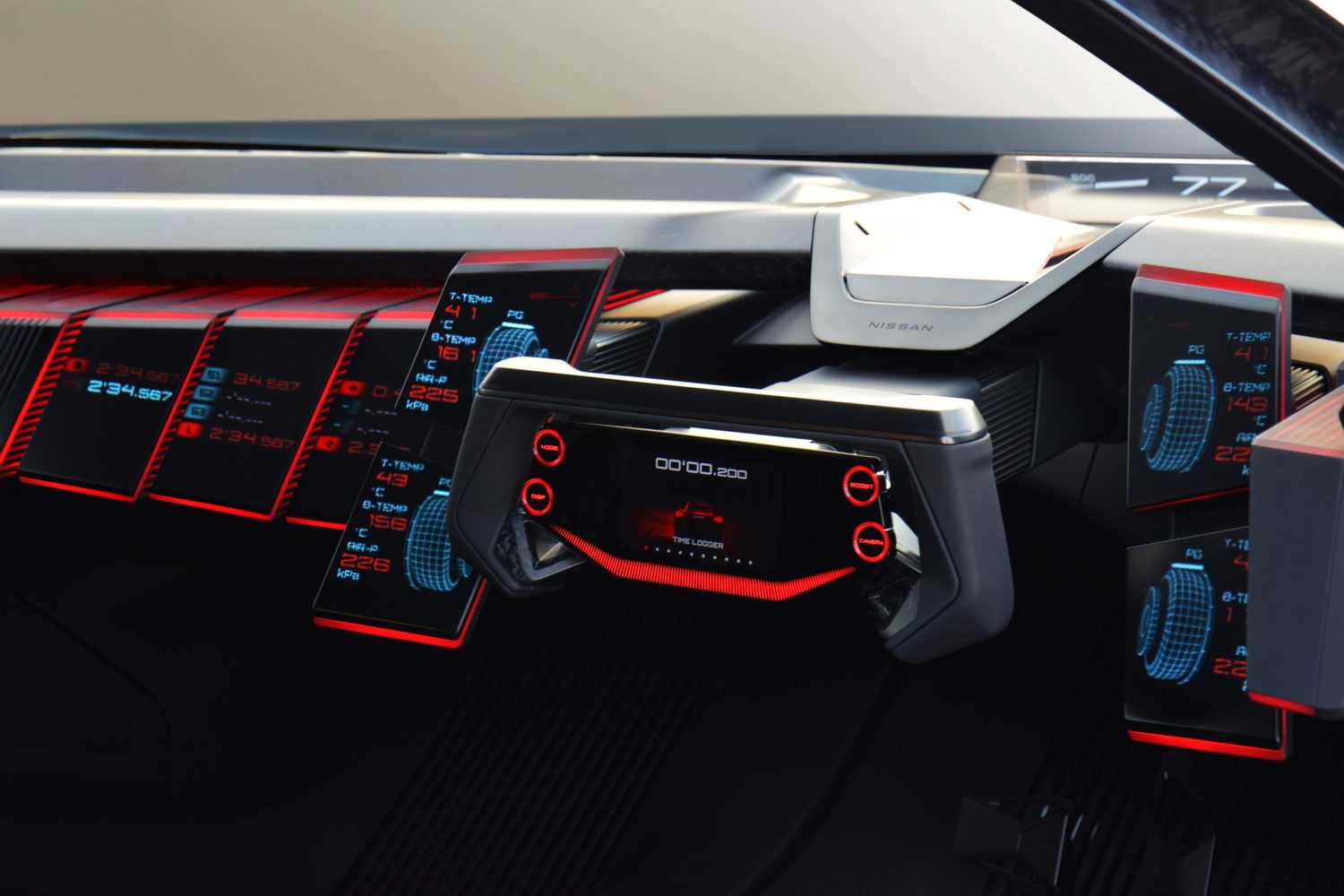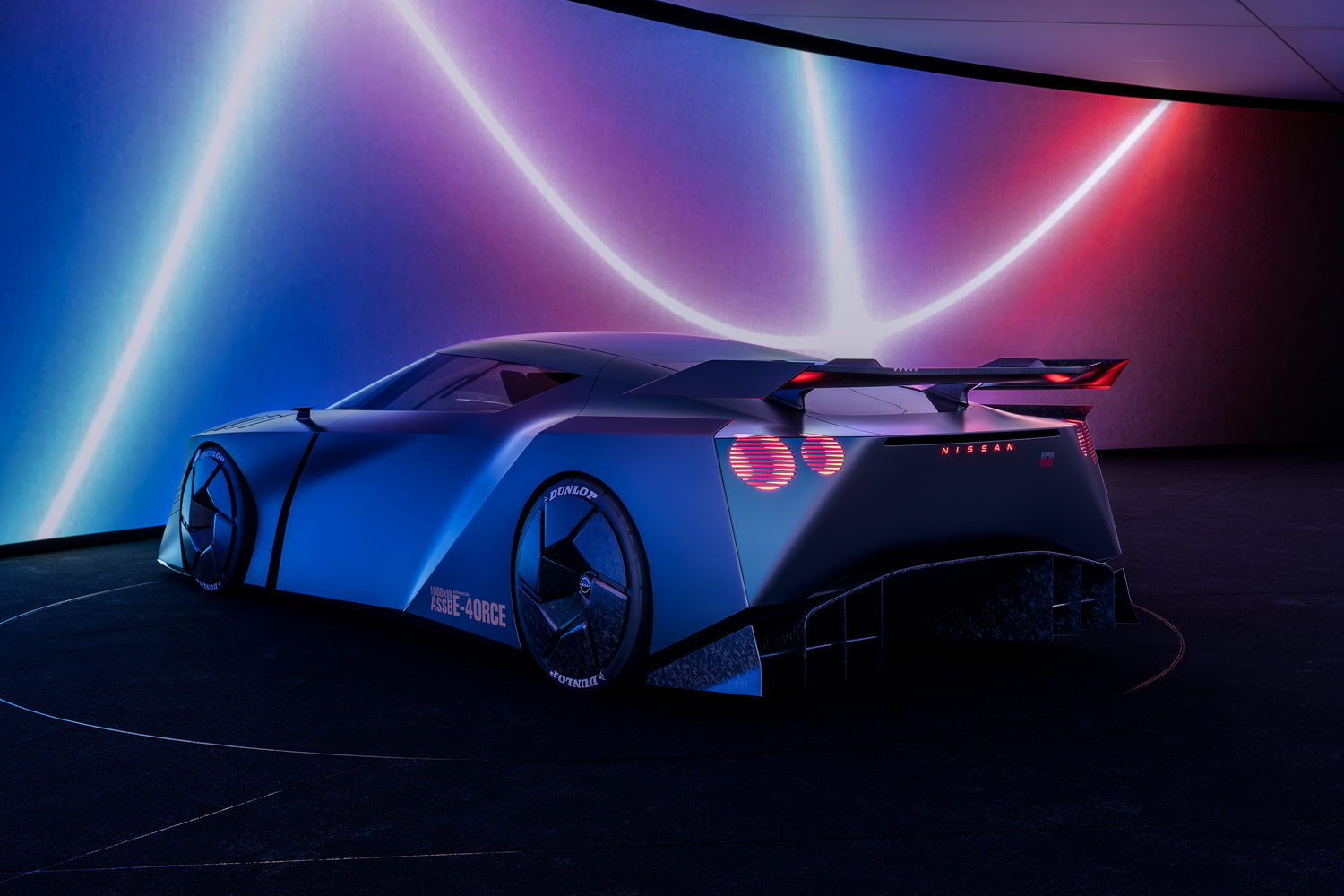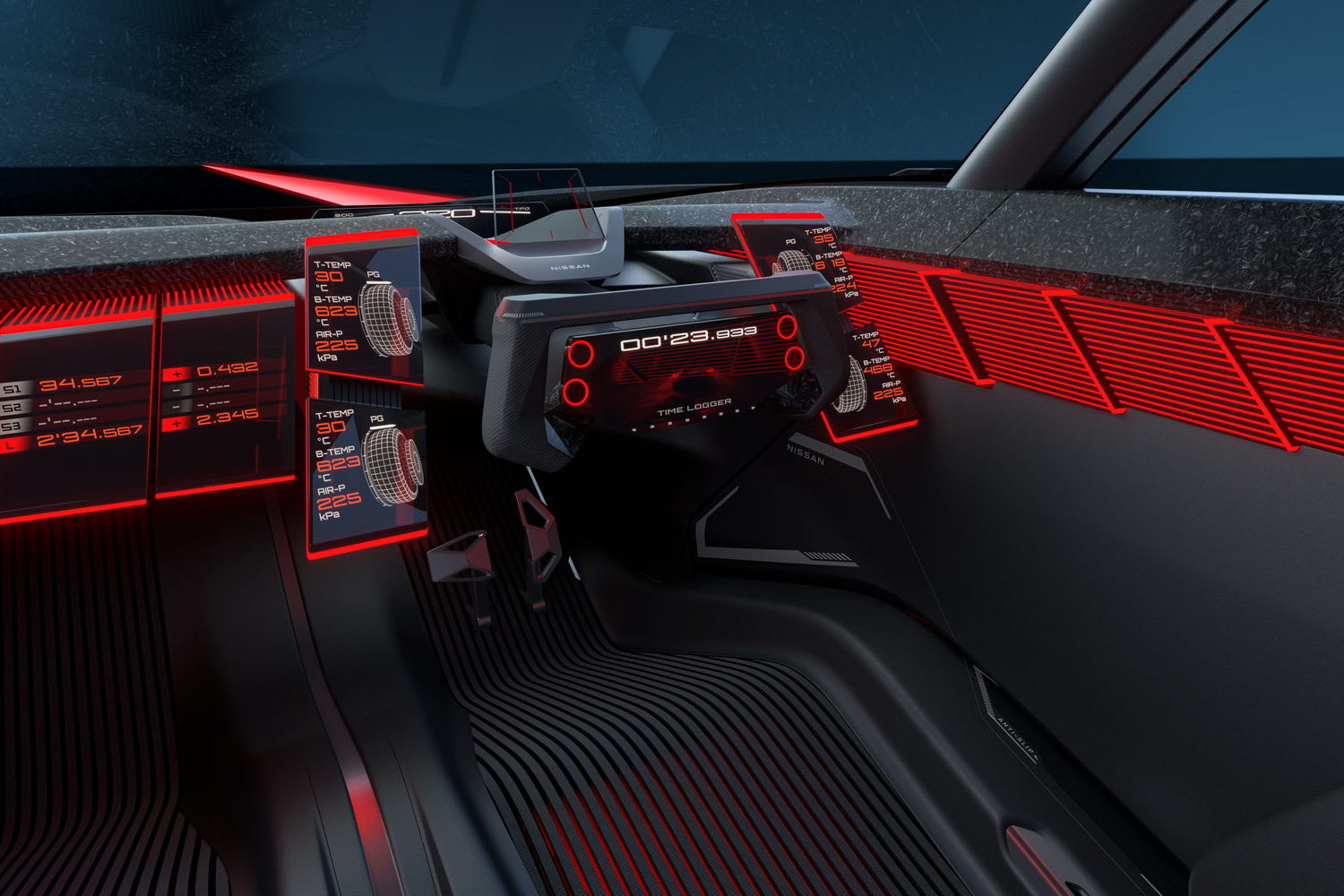Nissan is clearly thinking about how to re-invent its iconic GT-R supercar for the electric era, and if this Hyper Force concept is anything to go by, count us in.
The Hyper Force - revealed at the Japan Mobility Show this week - is a massive (more than five metres long) electric hypercar, which looks like a cross between an Audi Sport Quattro and a Manga mecha at the front, but which looks very much like a futuristic GT-R at the rear (massive spoiler, check; distinctive round lights, check).
More than 1,300hp(!)
It's the fifth of Nissan's 'Hyper' electric concept cars destined for the show in Tokyo, and without question the most exciting. That's because it develops 1,000kW of power. Not sure how much that is? Let us do the maths for you - it's 1,359hp. Given that the current GT-R makes around 700hp and passengers feels like they're being strapped to the business end of an Apollo rocket, what's the Hyper Force going to feel like when it's unleashed?
It's not just about power, either. That jutting jaw and massive rear wing produce proper downforce, while the four-wheel-drive system uses a highly-advanced version of Nissan's current adaptive e-Force setup.
The aerodynamic package was developed with NISMO, Nissan's in-house racing squad, and uses a two-tiered aerodynamic structure under the front hood providing both strong downforce and high cooling performance. Meanwhile, the dual-level rear diffuser controls airflow under the car and out the back. The front canards, front fender flip and both ends of the rear wing feature a unique active aero setup, while a newly developed 'plasma actuator' suppresses air detachment to maximise grip and minimise inner-wheel lift during cornering. The lightweight forged carbon wheels are said to aid aerodynamics and brake cooling.
Create a more sustainable world
Nissan president and CEO Makoto Uchida said: "All five concept cars showcased today are symbols of the future and embody our founding spirit of 'daring to do what others don't'. We have advanced our EV innovations, moving beyond mobility to create a more sustainable world. The EVs symbolise our future of creating a cleaner, safer and more inclusive world for everybody without compromising on passions and dreams. Through the power of innovation, Nissan is creating a future where everyone can enjoy the excitement of mobility."
Inside, there's a racing-style cabin with a tiny twin-grip steering 'wheel' and changing colour schemes according to whether you're in GT (grand touring) or R (race) driving modes. The displays for the Hyper Force's digital screens (four satellite screens around the steering wheel display tyre grip and temperature, air pressure, brake disc temperature and power distribution) have been developed by Polyphony Digital, the people who make the Gran Turismo video game which, in a nice bit of circularity, was the title that helped propel the original R33 and R34 Skyline GT-Rs to global fame.
The driver and front passenger seats are made of lightweight, highly rigid carbon fibre that apparently allows comfortable long-distance driving, and they are equipped with four-point seat belts. Nissan says that safety was at the forefront of the Hyper Force's development so there's an advanced autonomous drive system with 'hyper LIDAR' and an array of sensors tuned for sports driving, and Nissan says that: "the vehicle is designed to ensure a high level of safety both on public roads and on the circuit."
Gaming experience
When you park up, the driving can continue as the Hyper Force comes with VR headsets that turn a stopped car into a gaming studio, allowing you to race around your favourite racetrack while you're stopped for a charge. By using skeleton visors for AR, the driver can compete against their own, friends' or even professional drivers' digital ghosts on a circuit, allowing users to push their driving skills on real-world tracks.
There's no confirmation of any production reality yet, and any production model will most likely have to wait till 2028 when Nissan brings its new solid-state batteries to the market. By then the current GT-R will be a whopping 21 years old, but Nissan seems to be serious about the idea of an all-electric GT-R replacement - "With its eco-friendliness, electrifying performance and cutting-edge safety equipment, this concept is Nissan's vision for a next-generation all-electric high-performance supercar."

